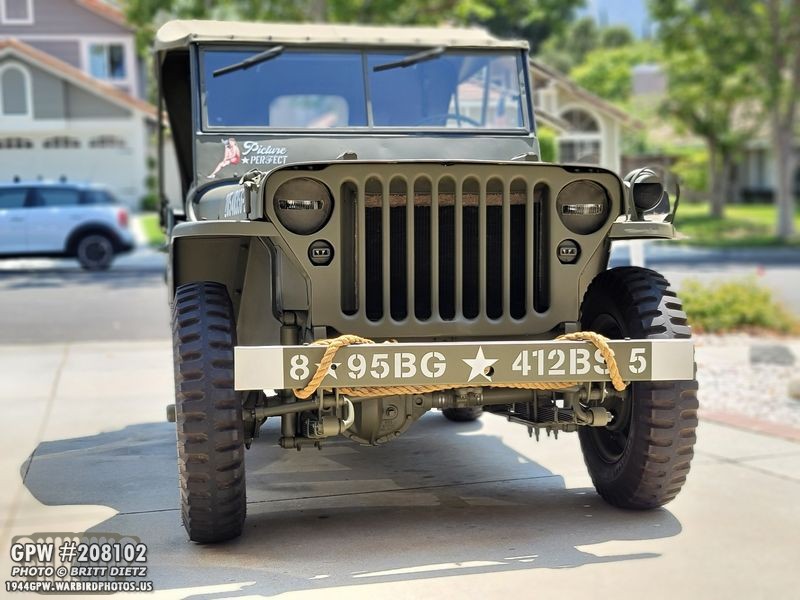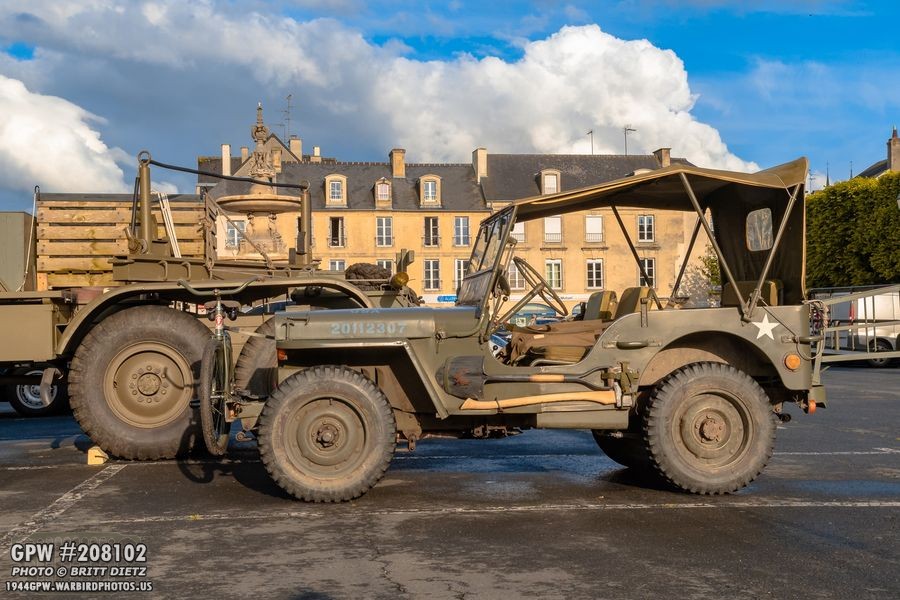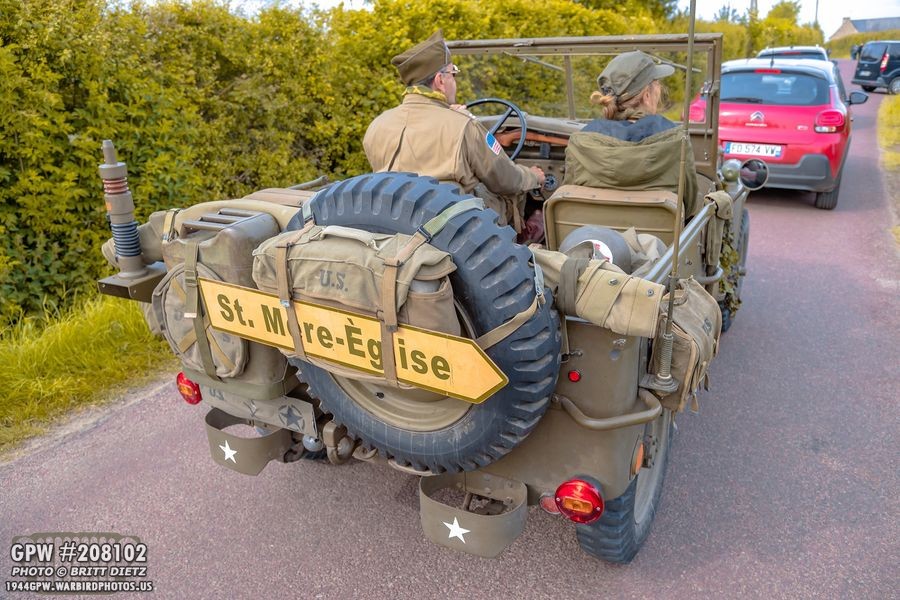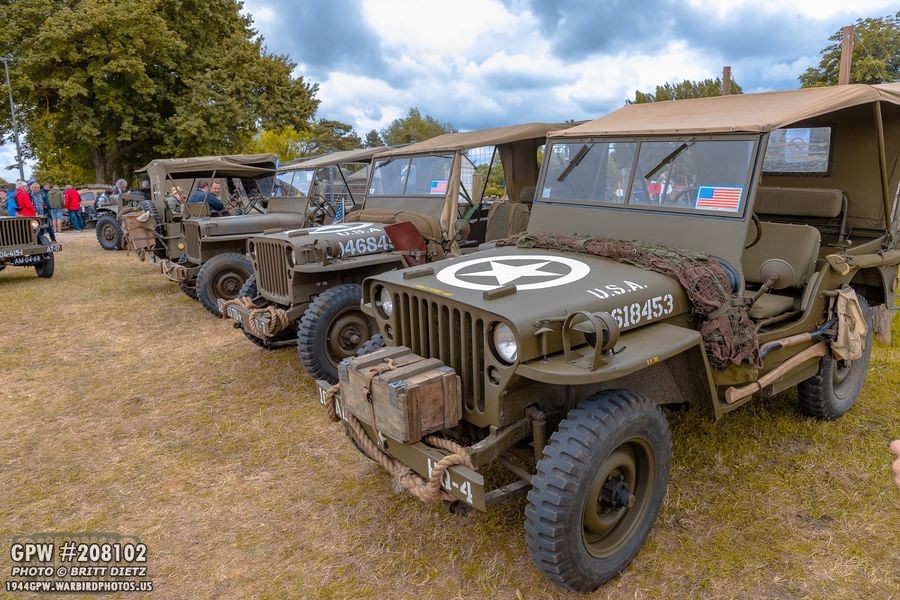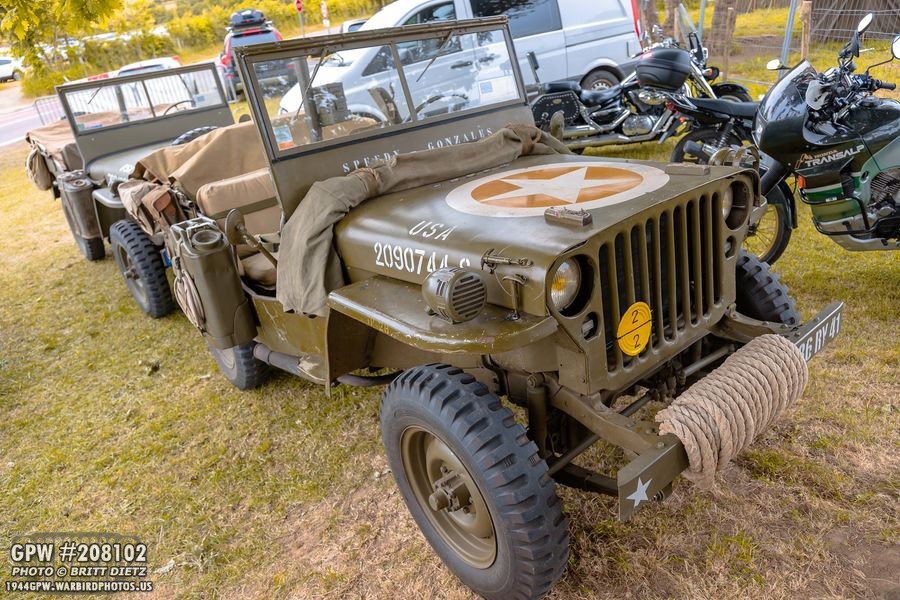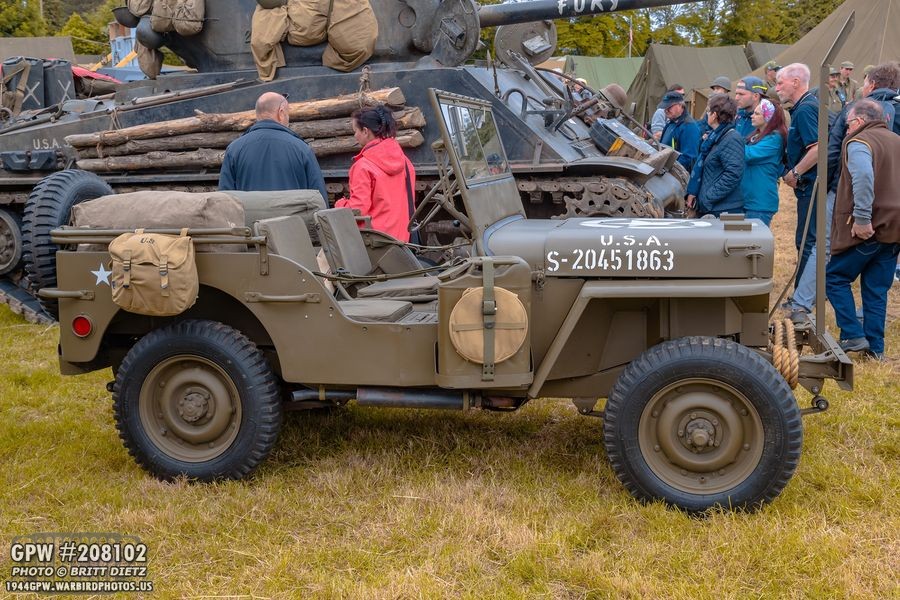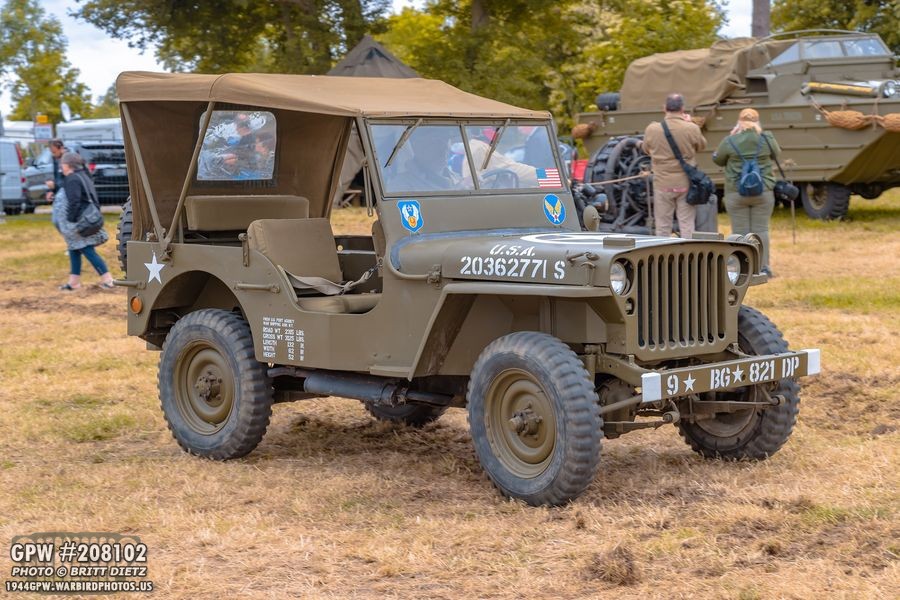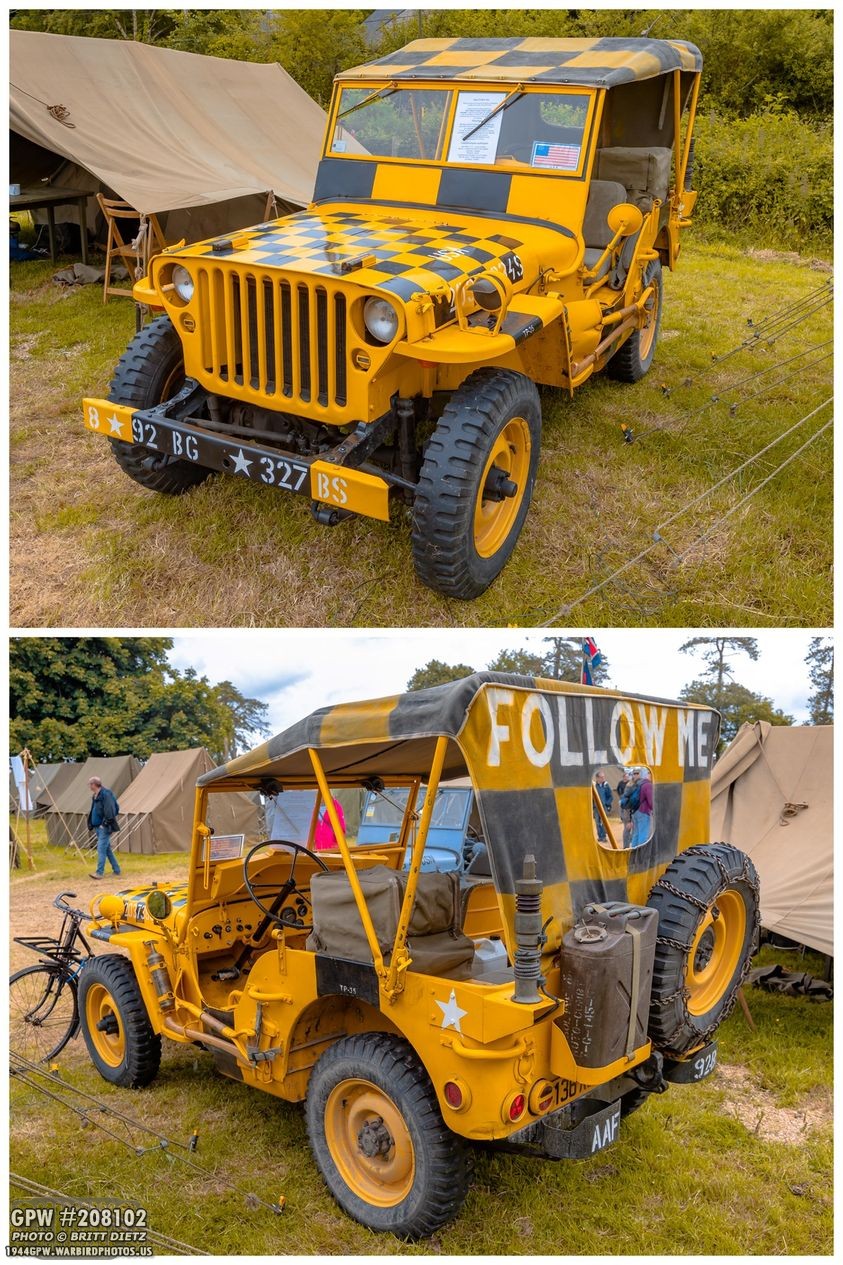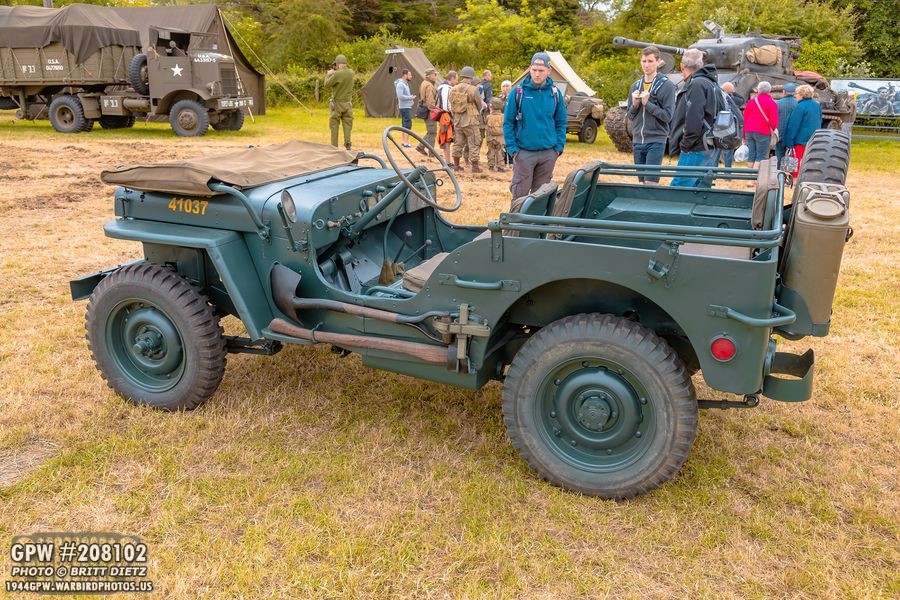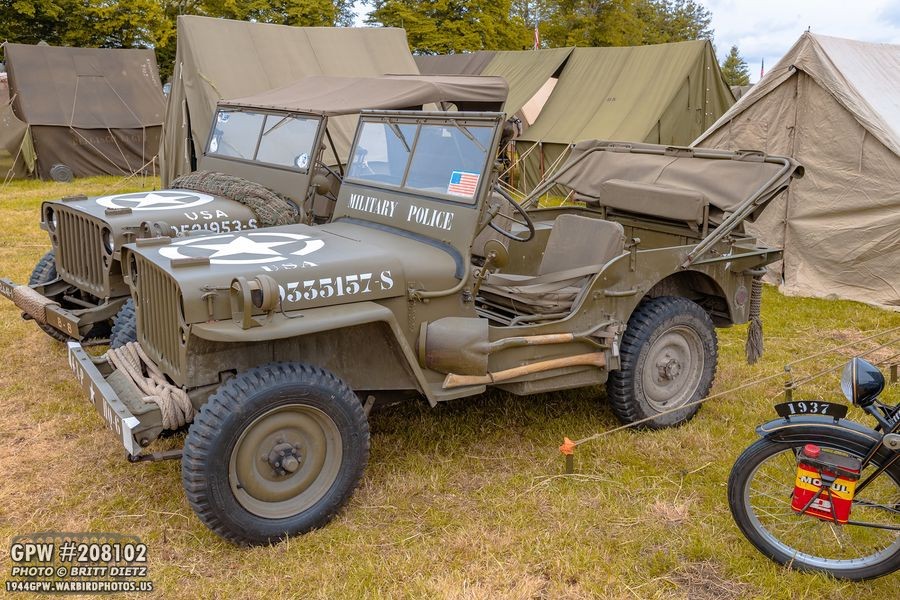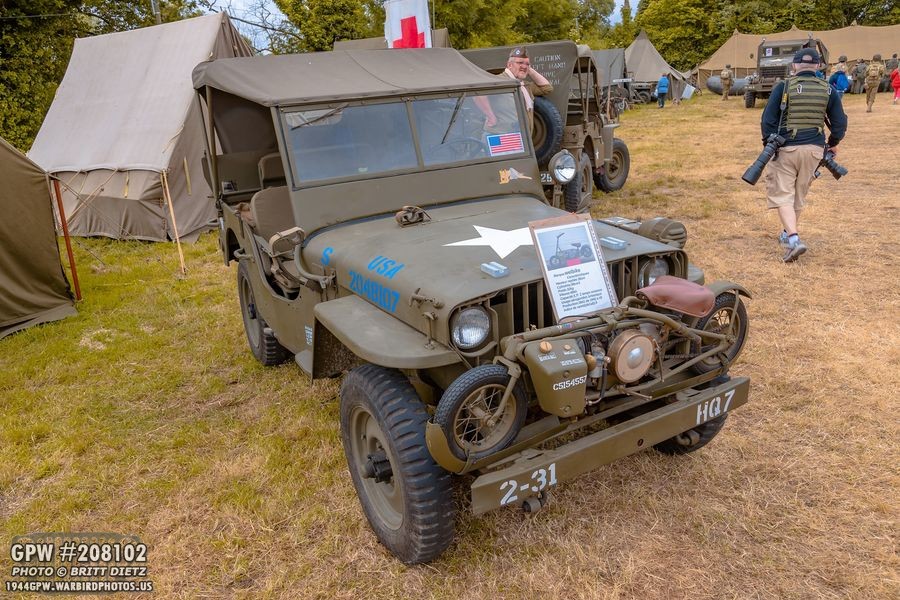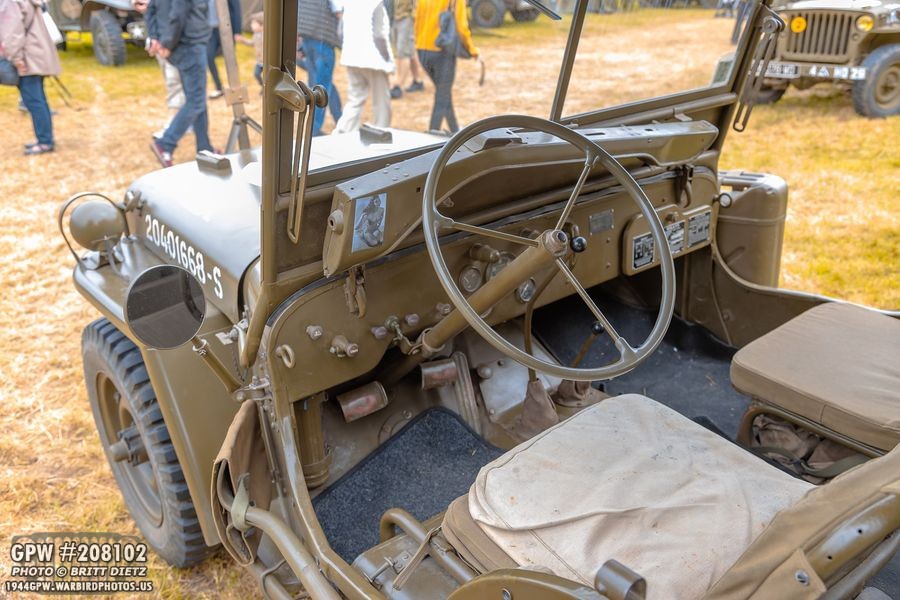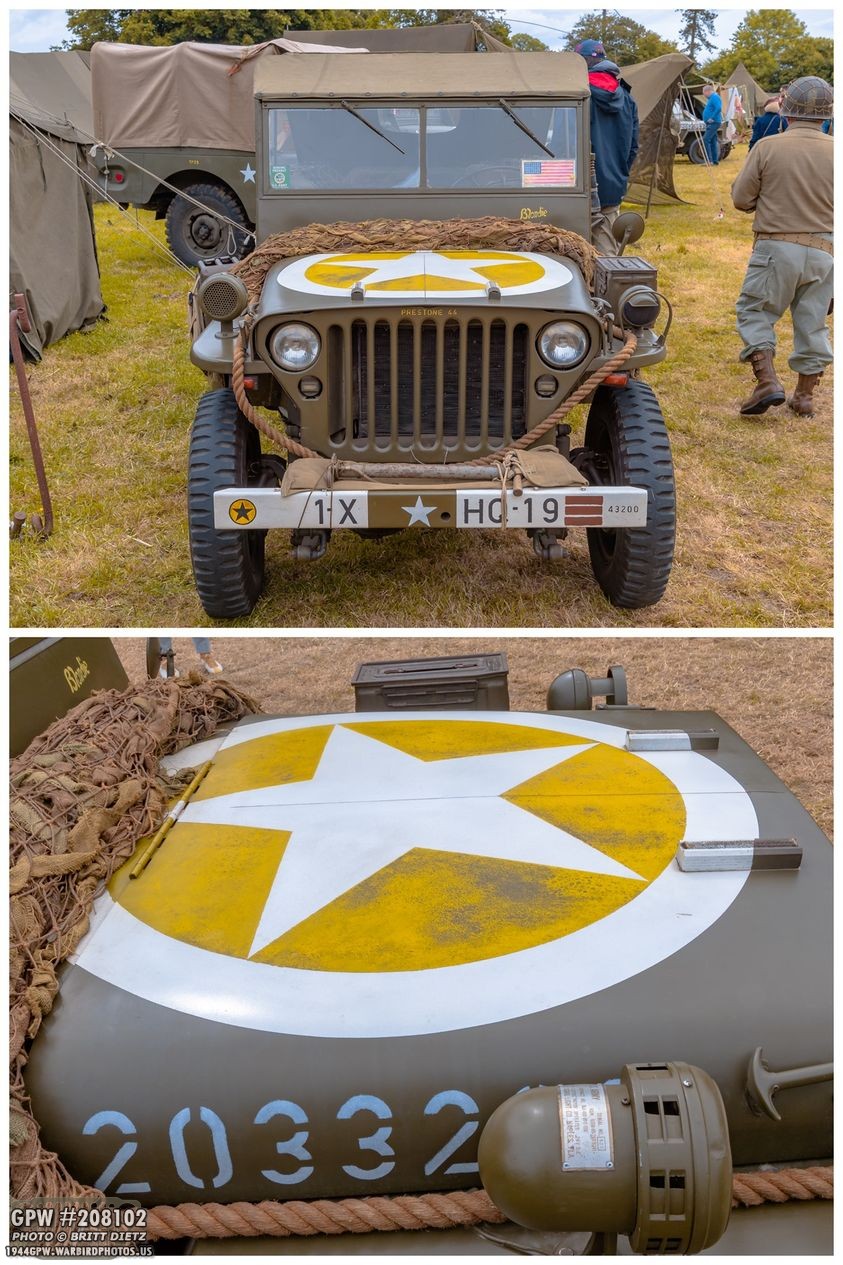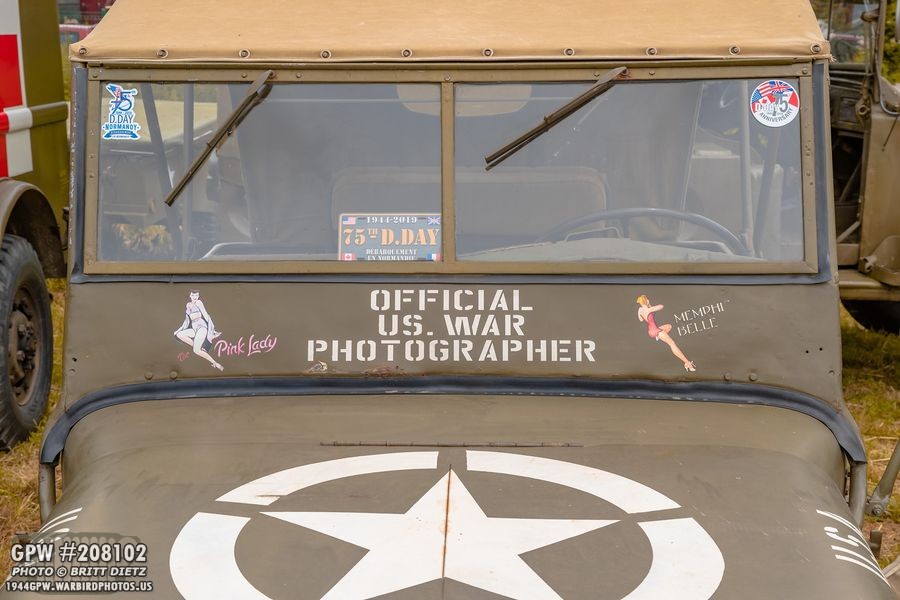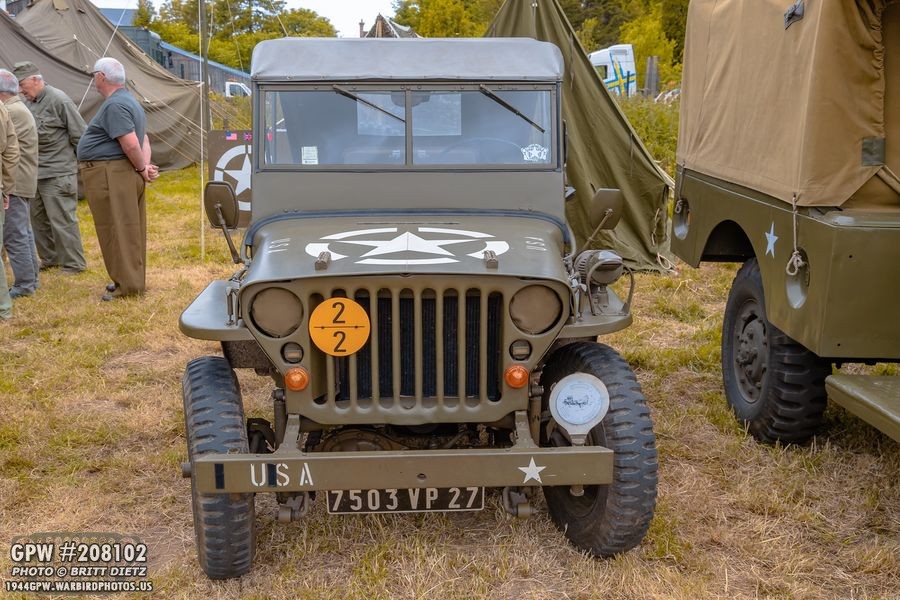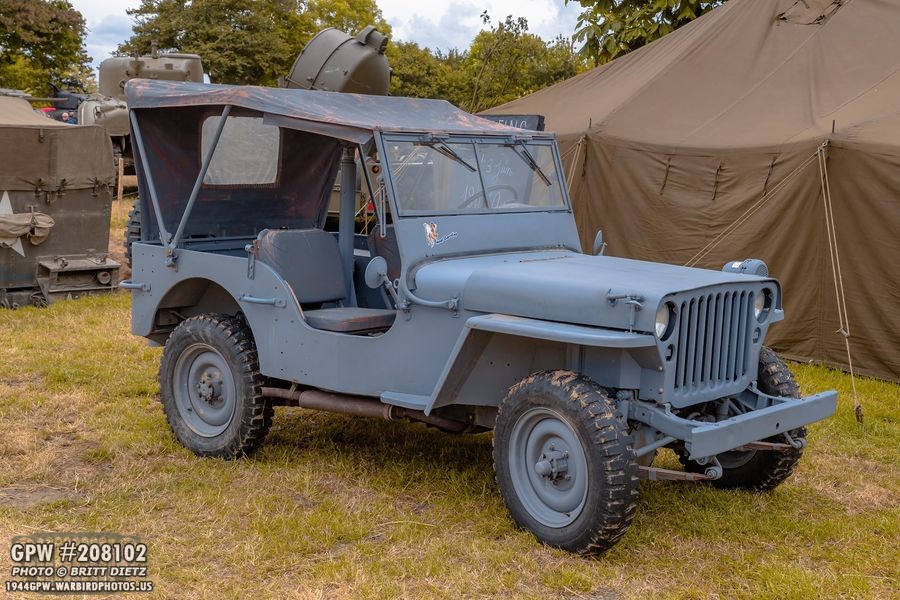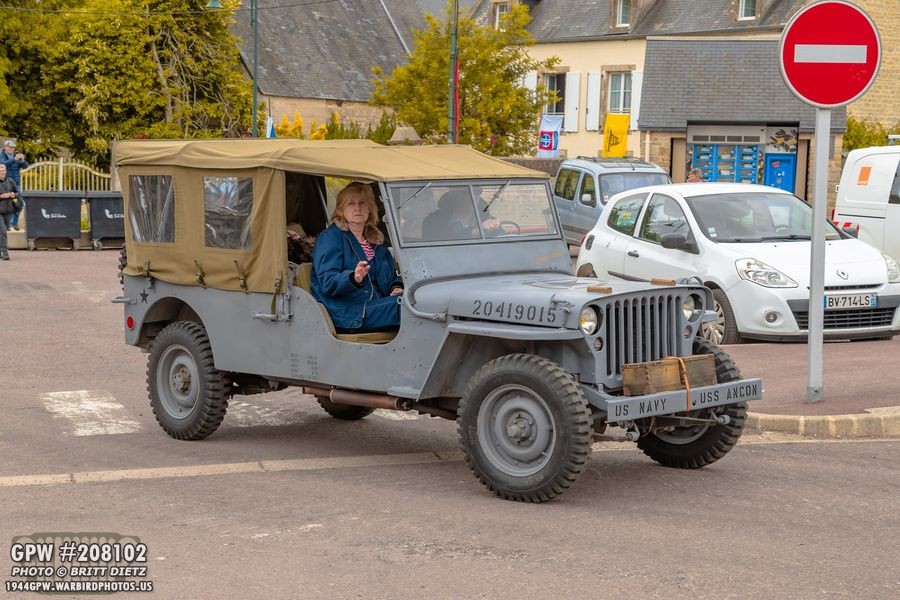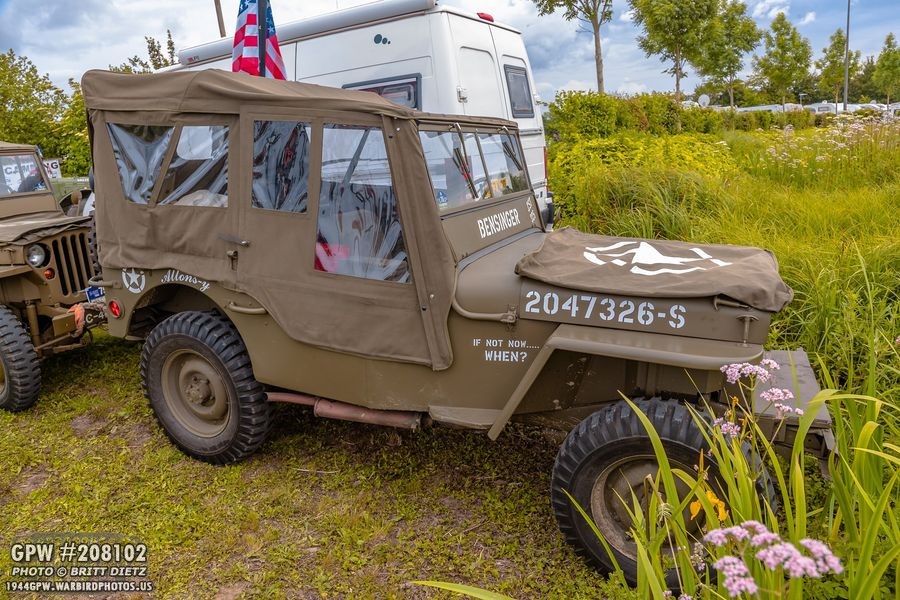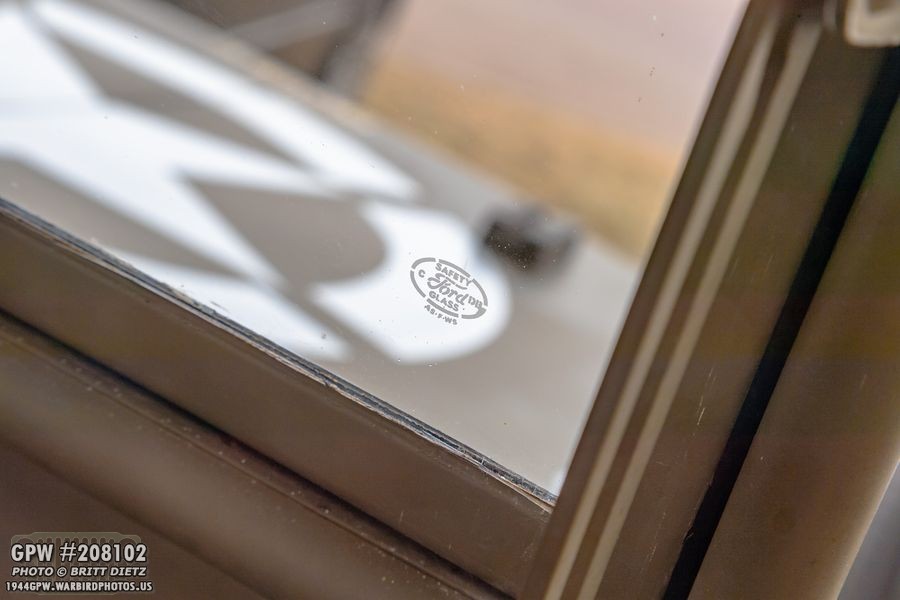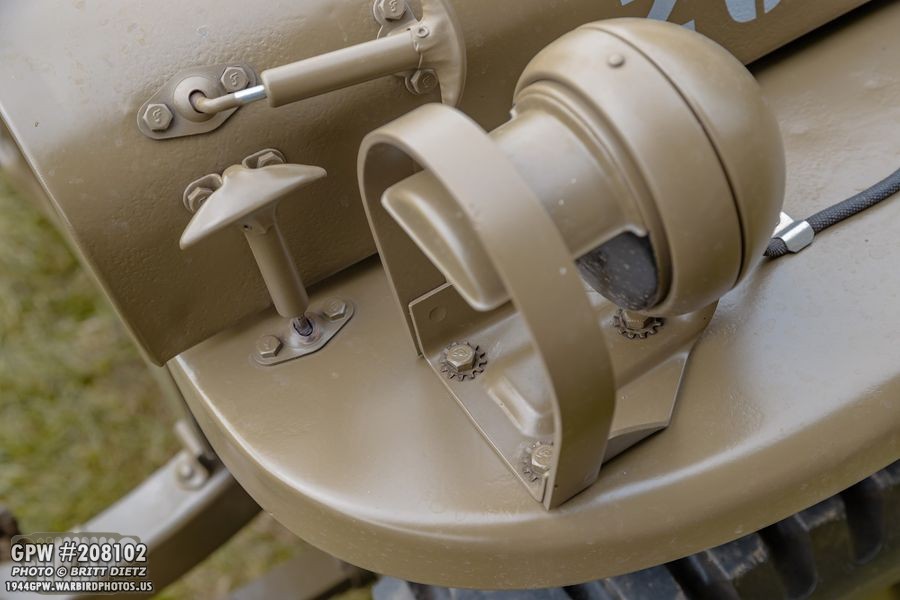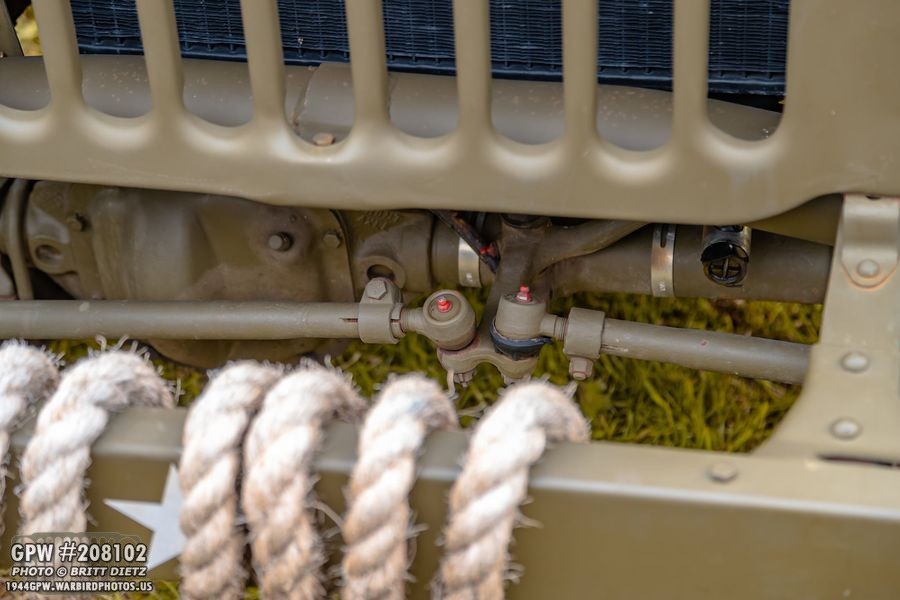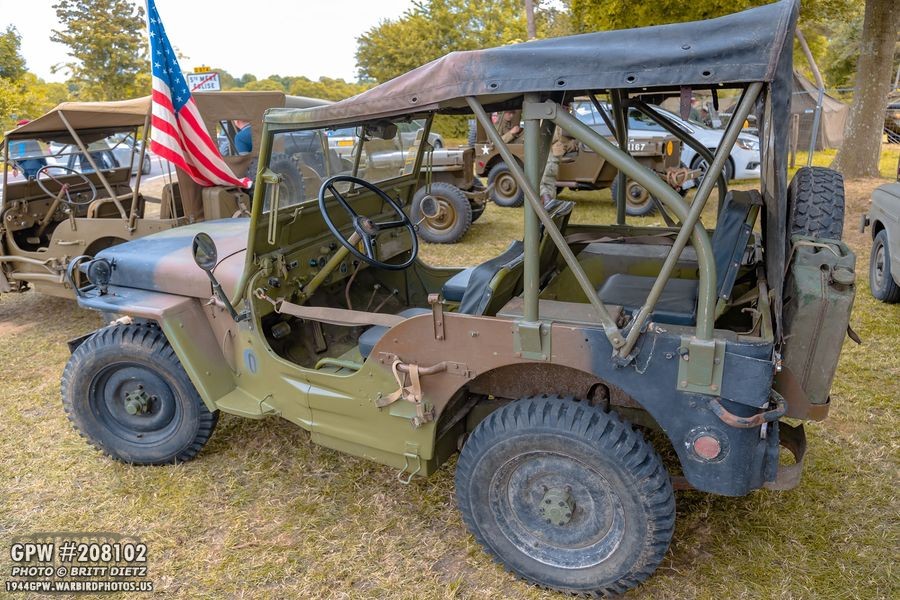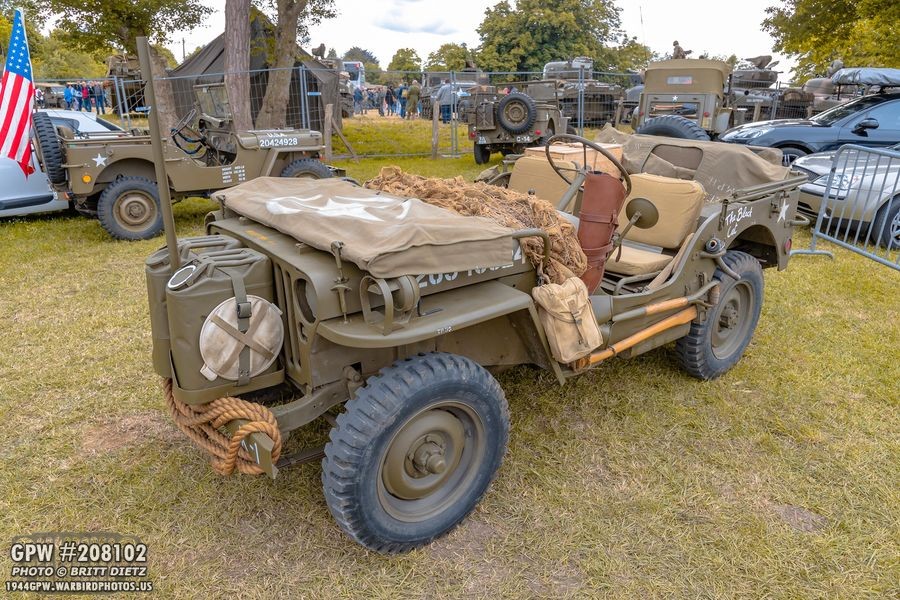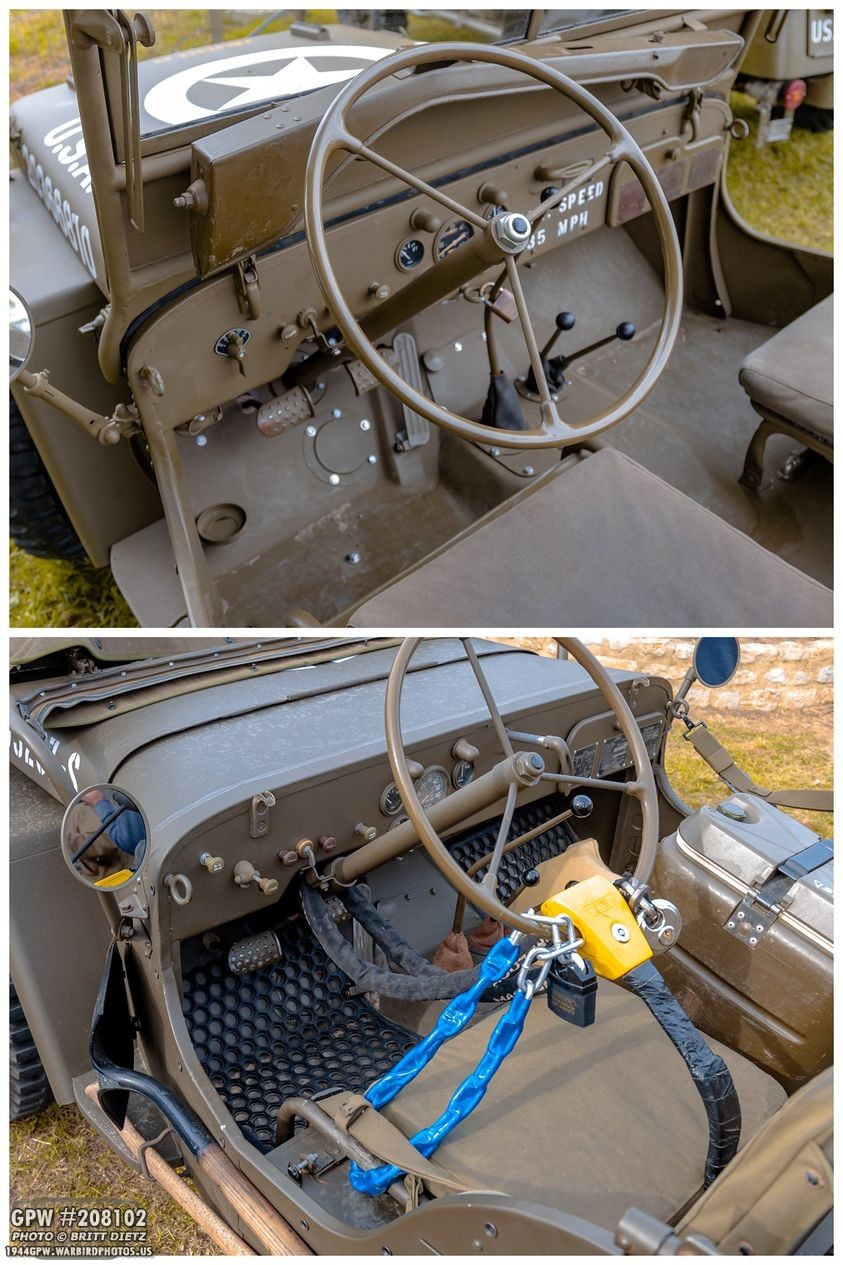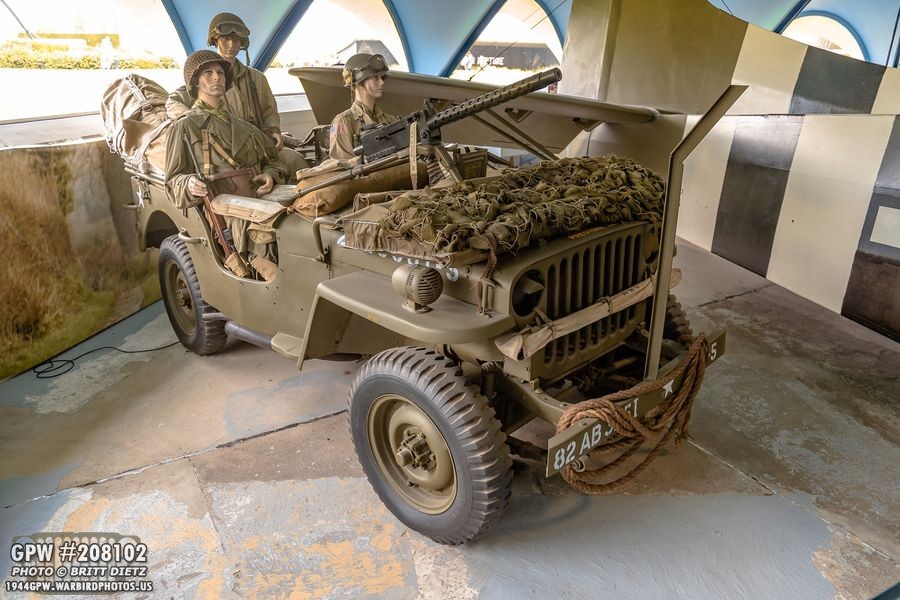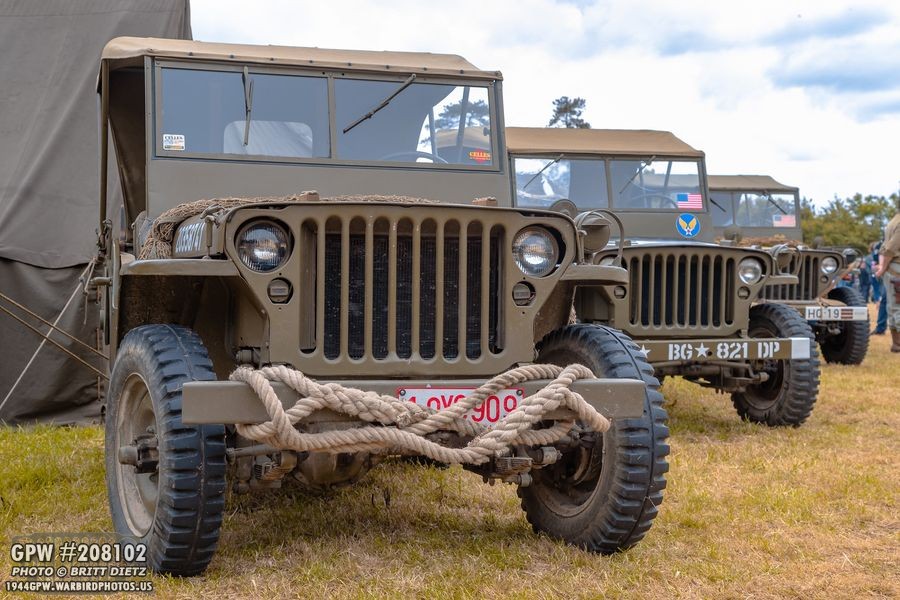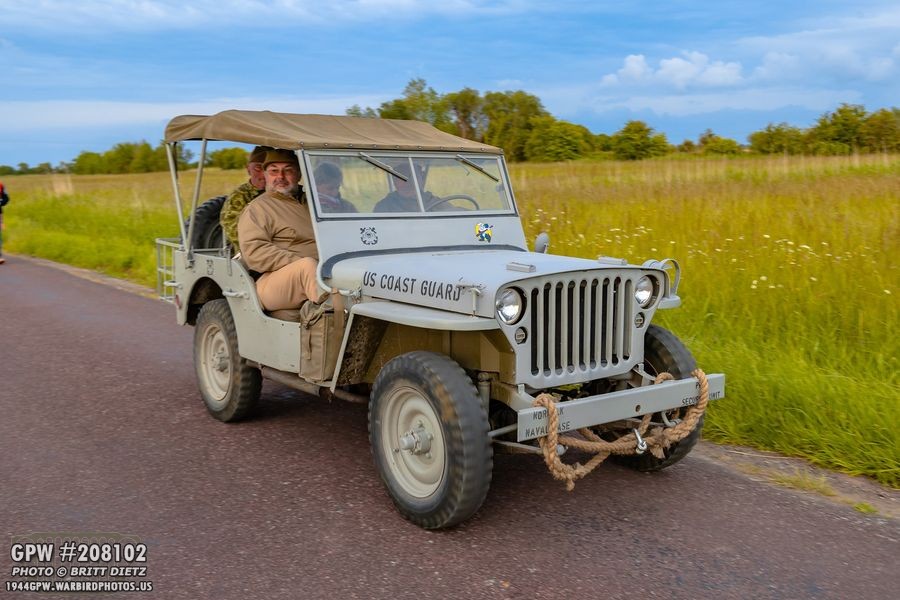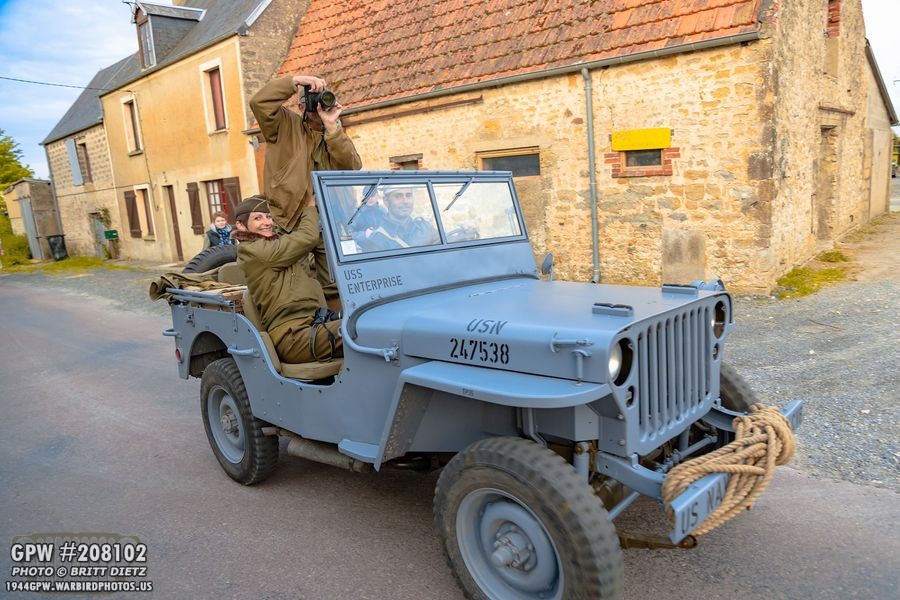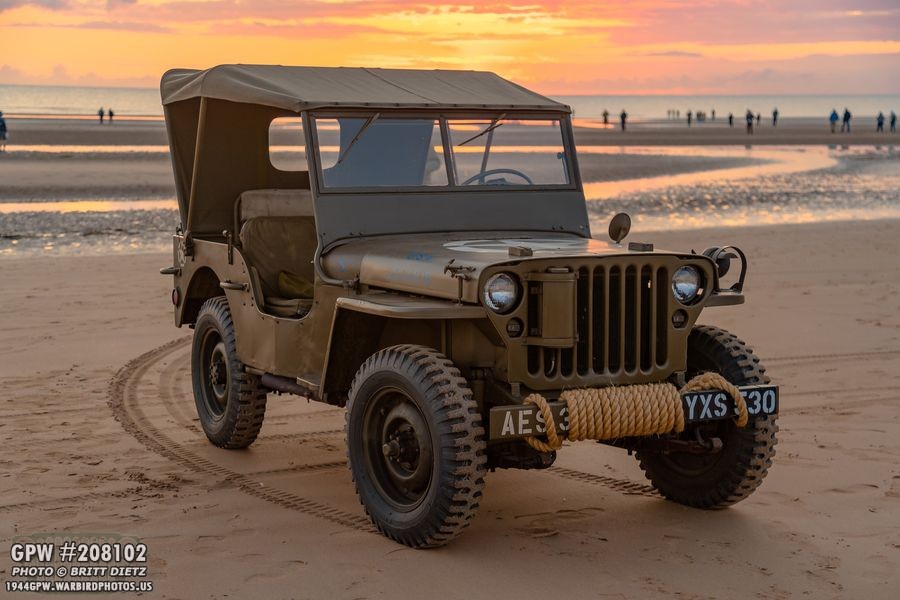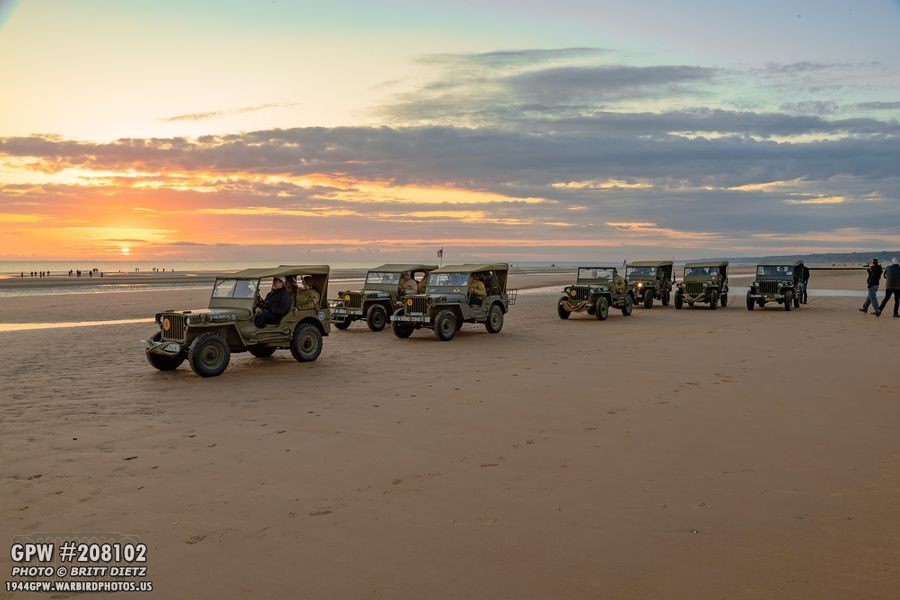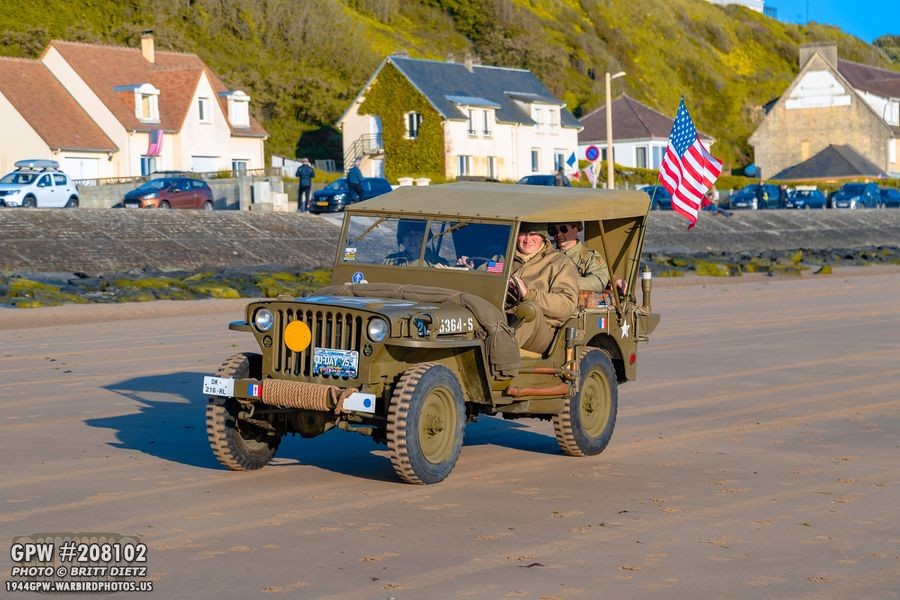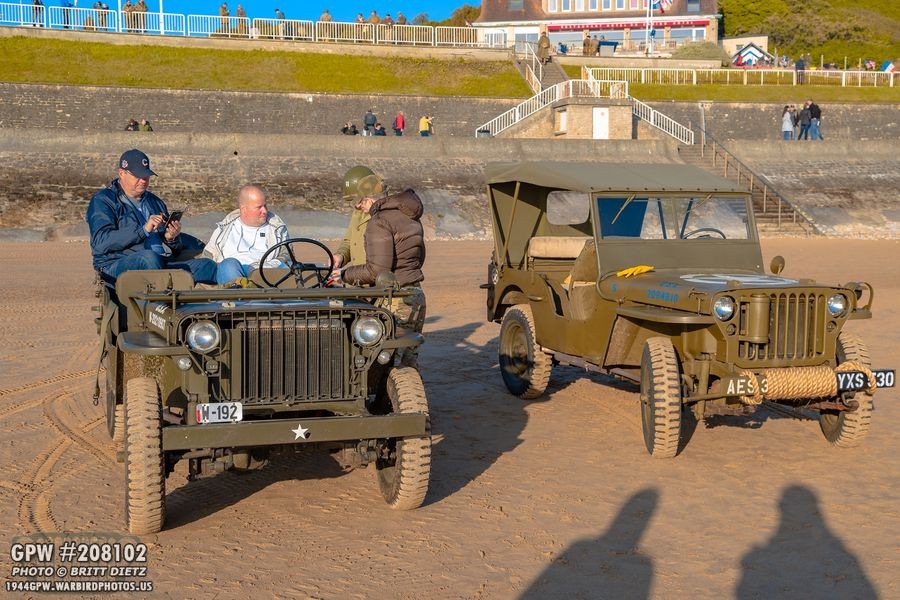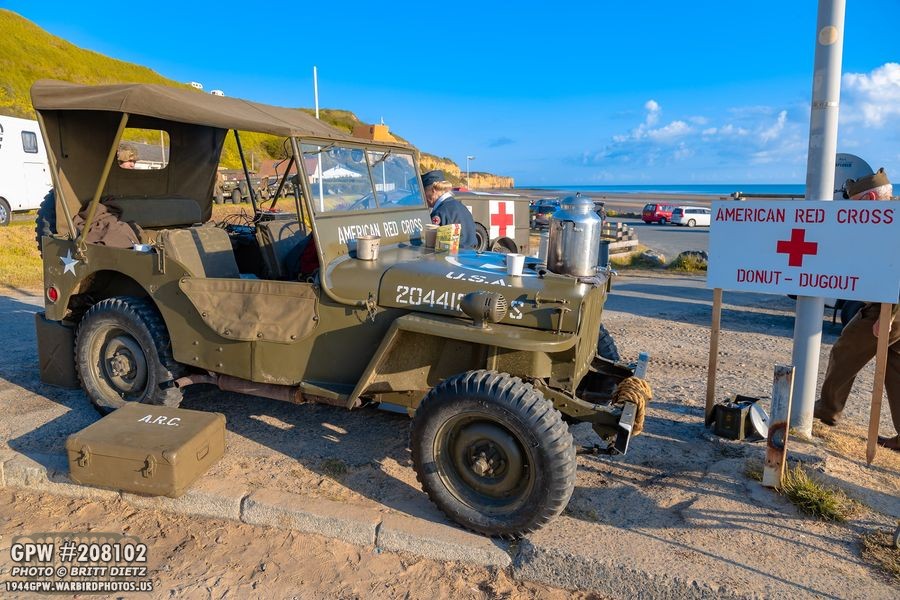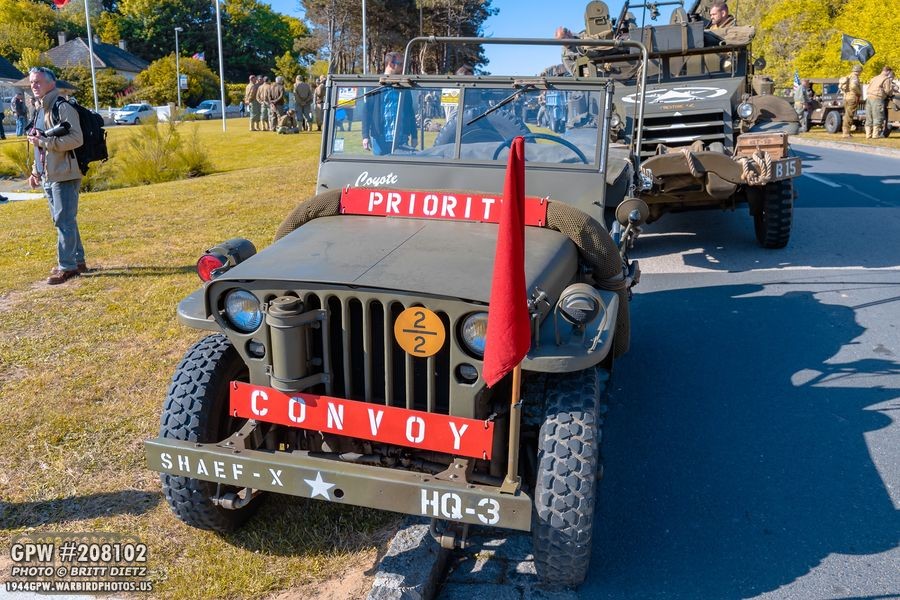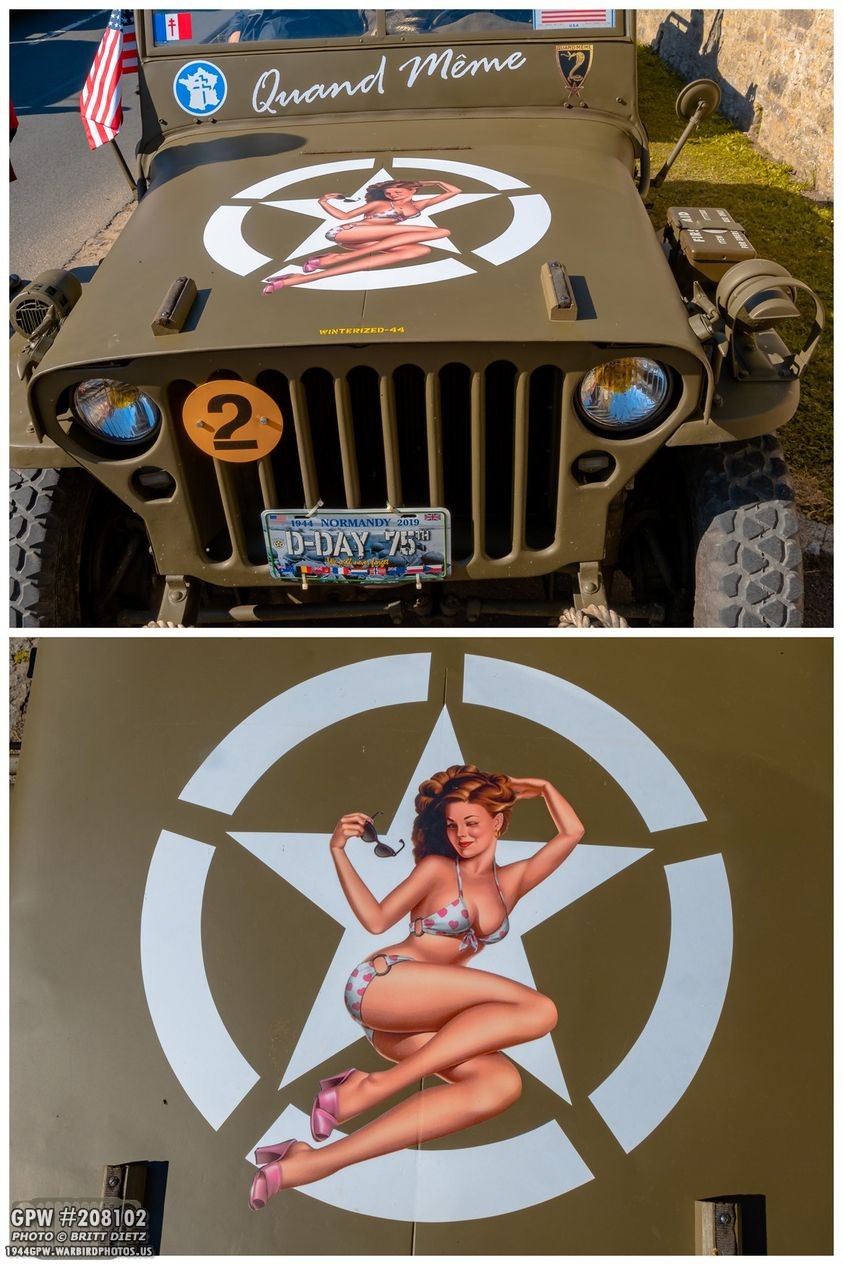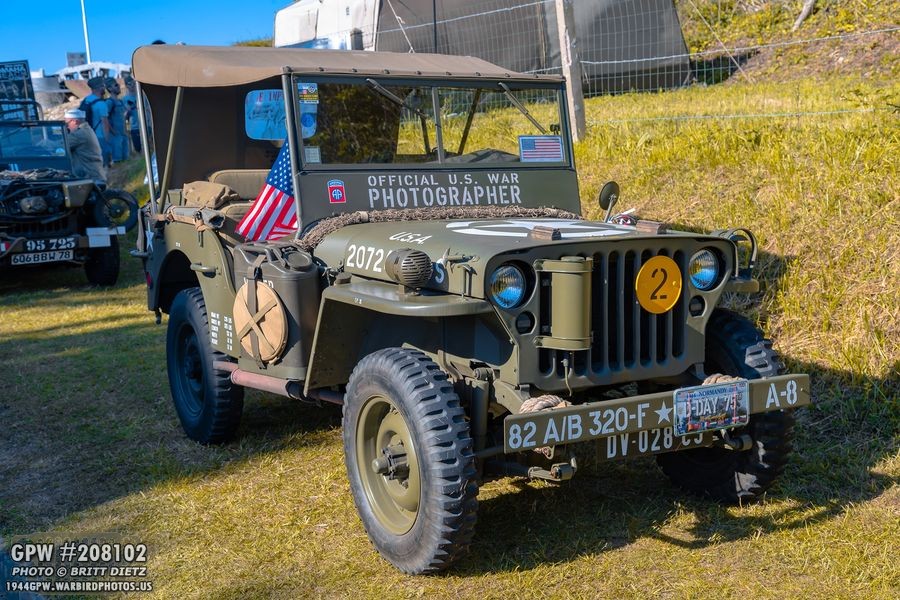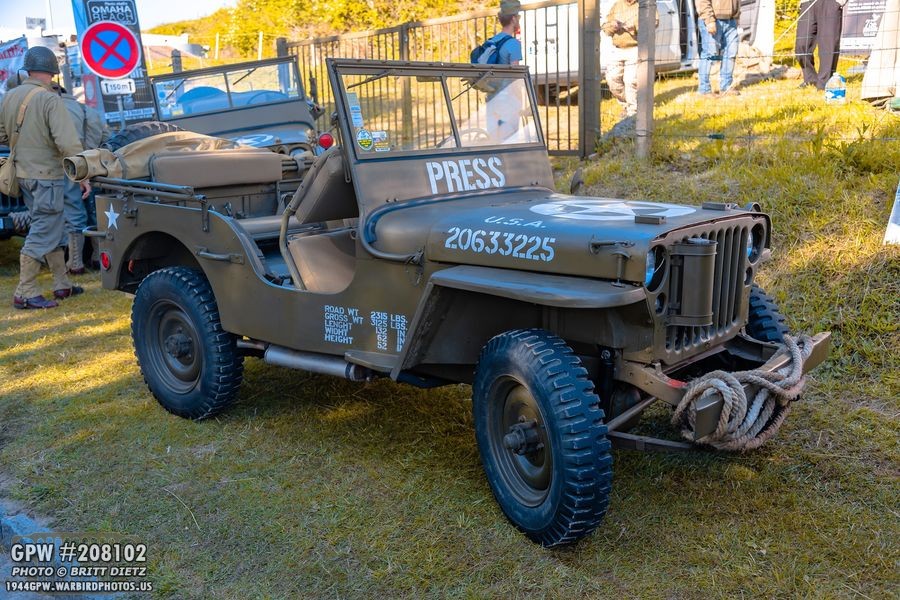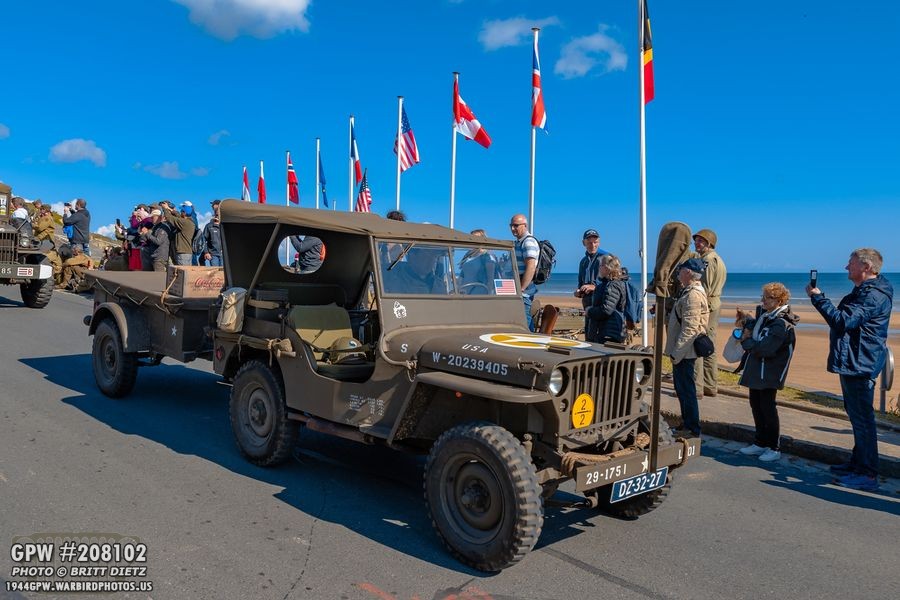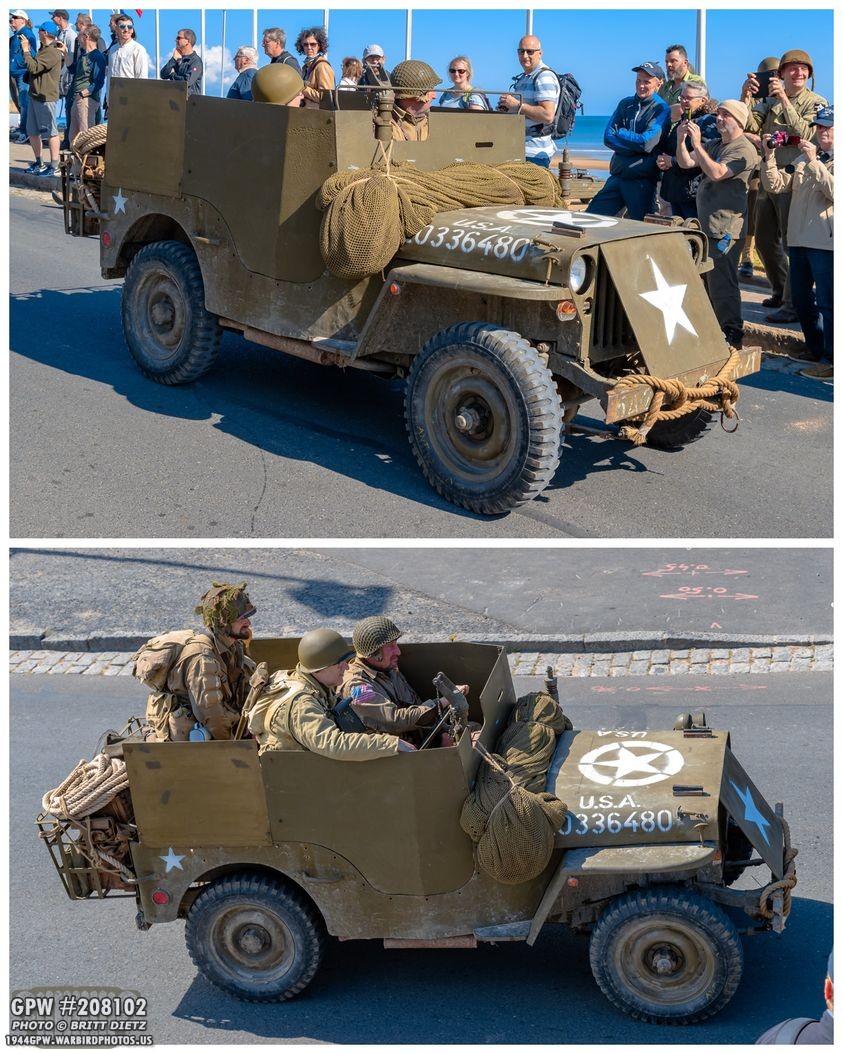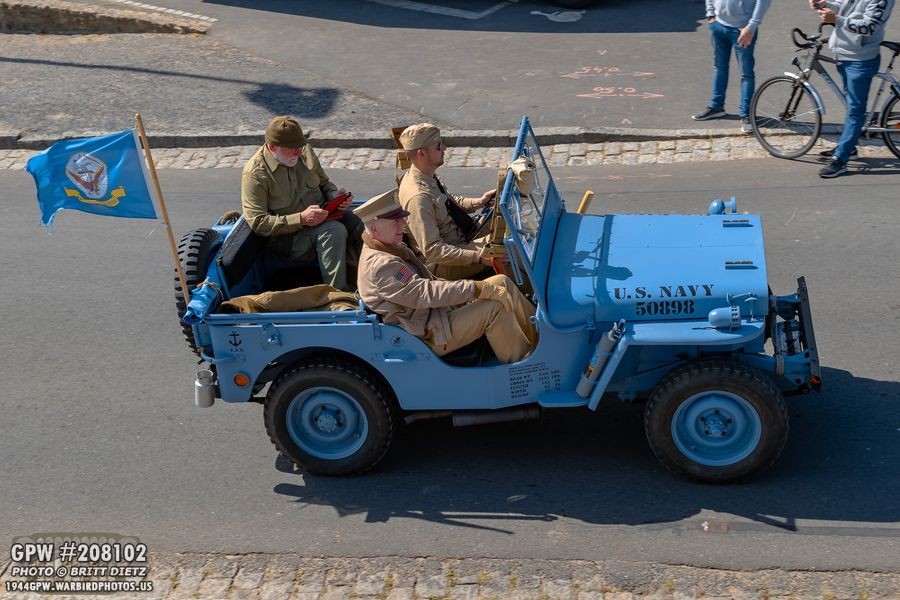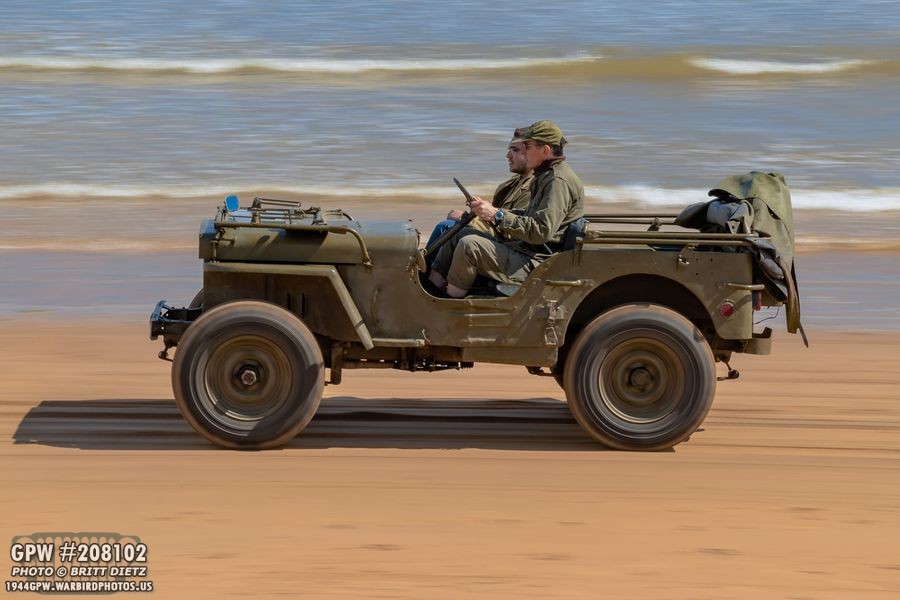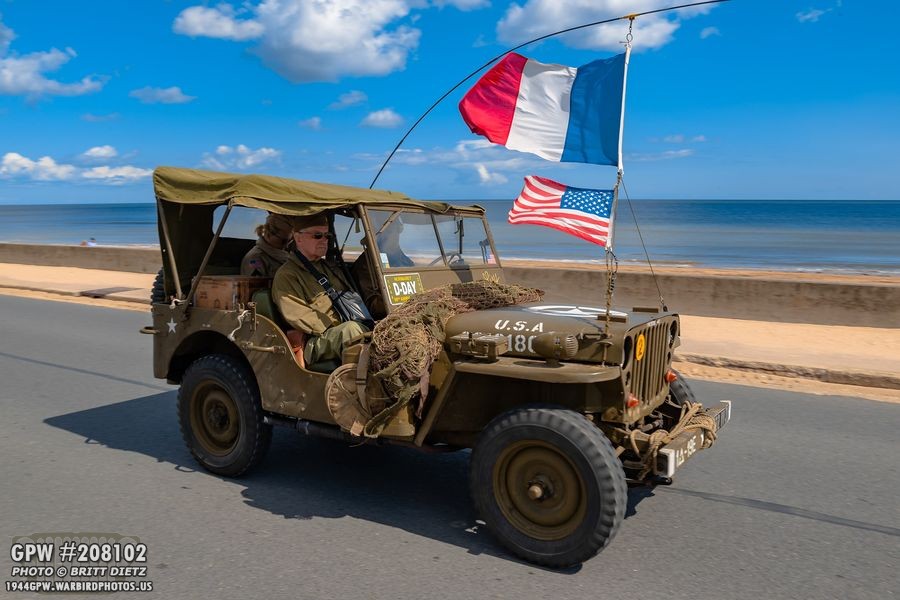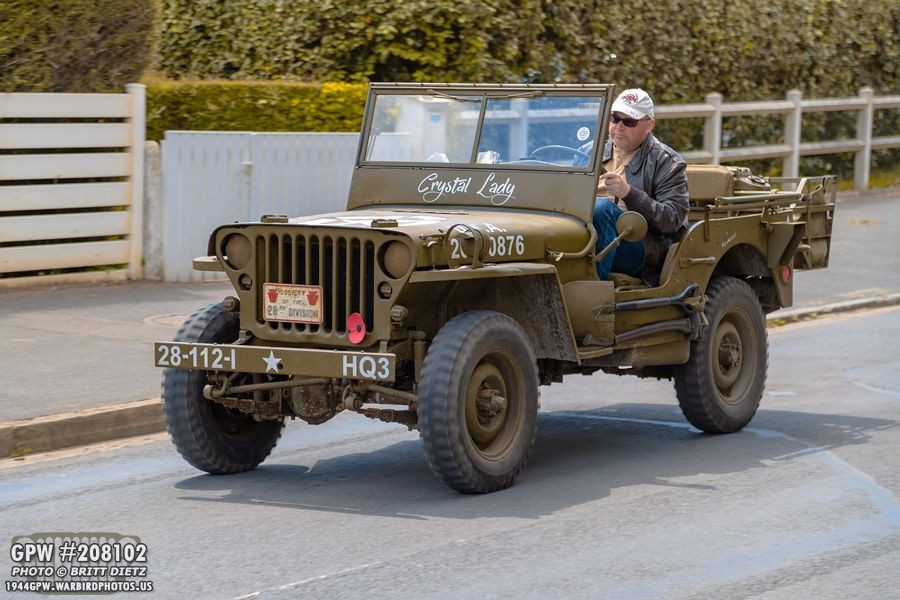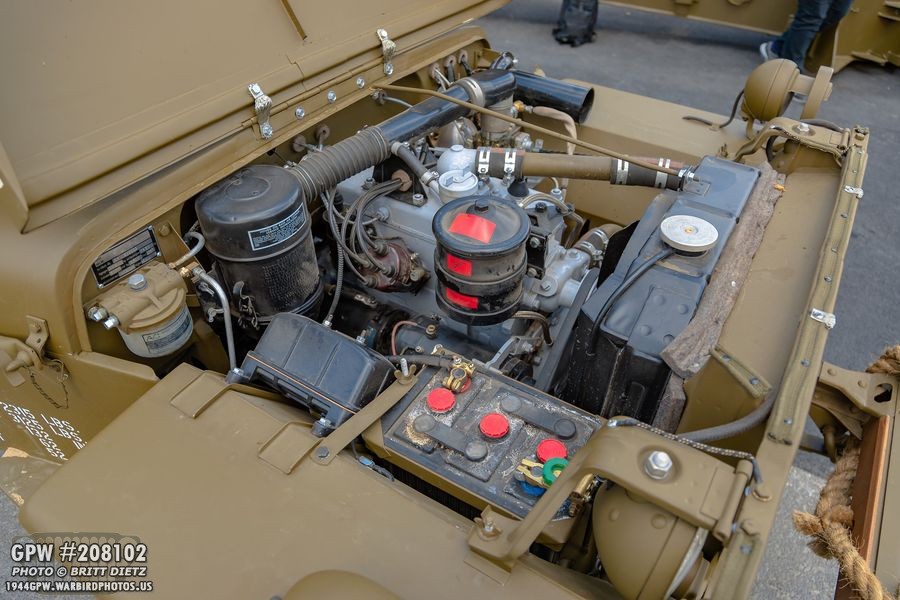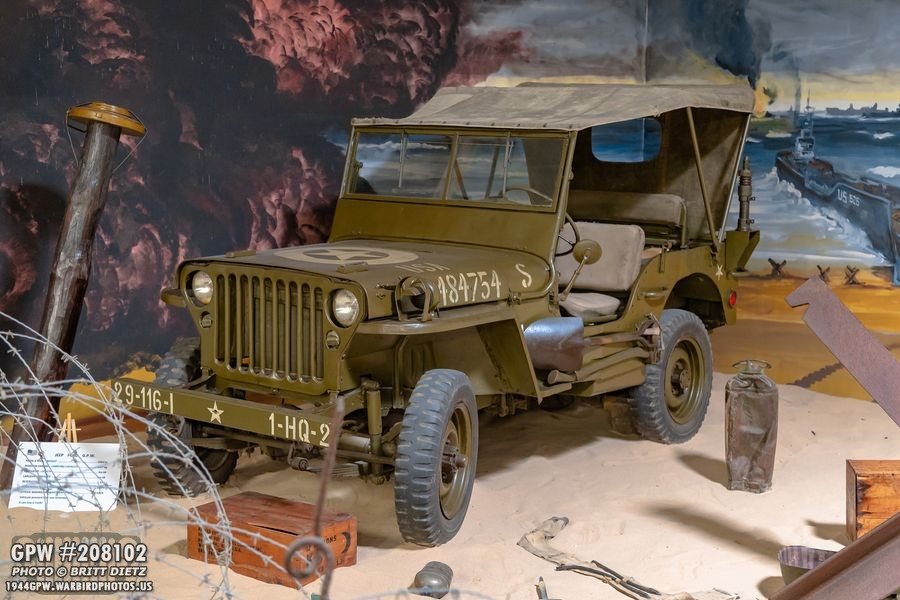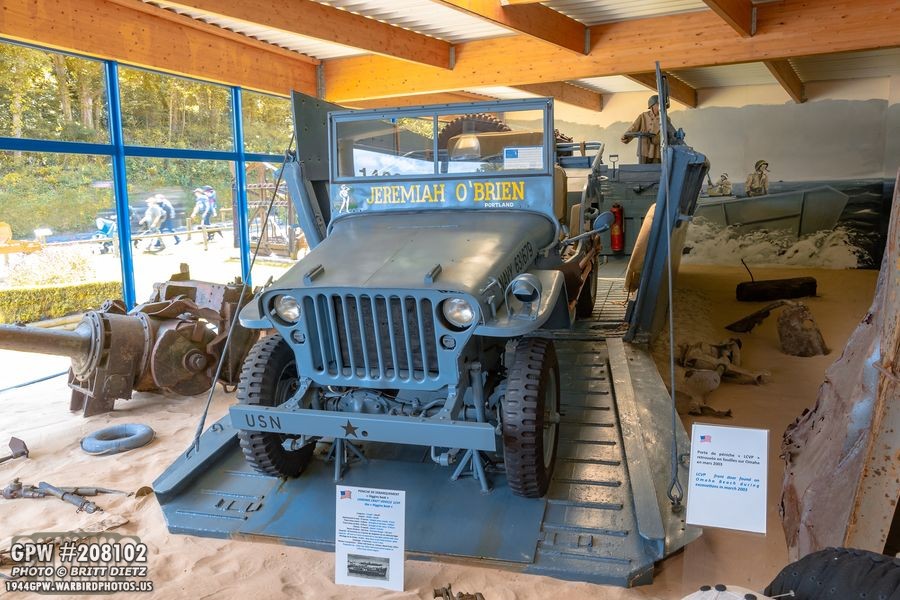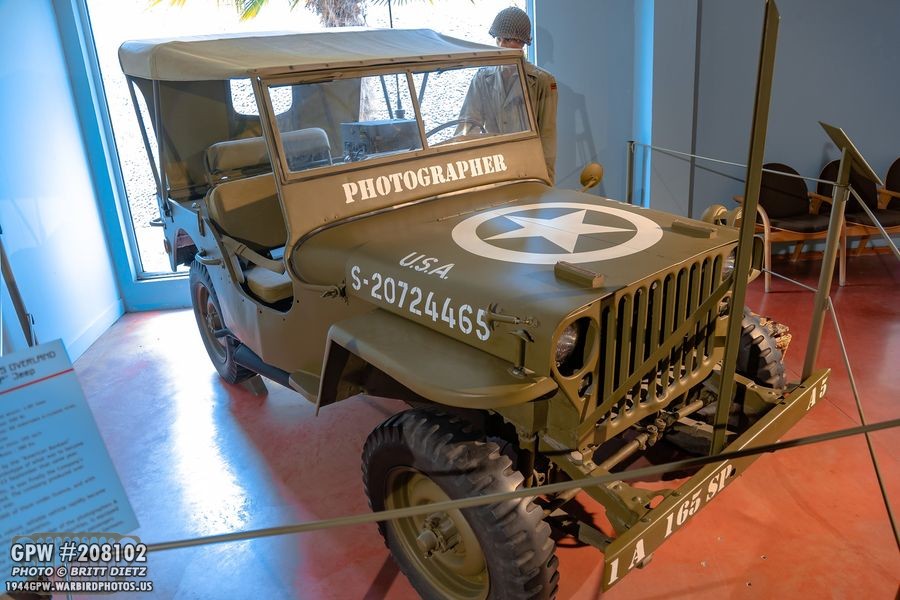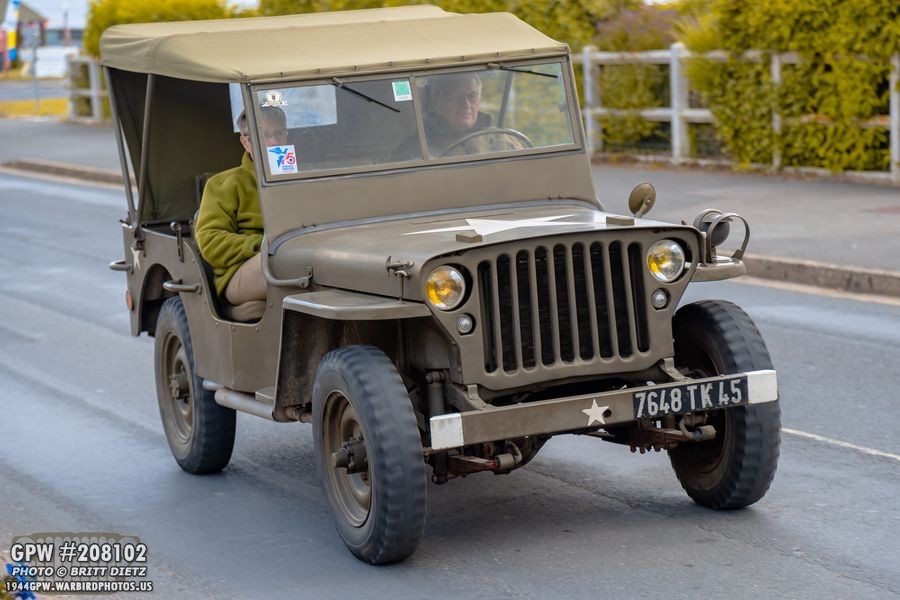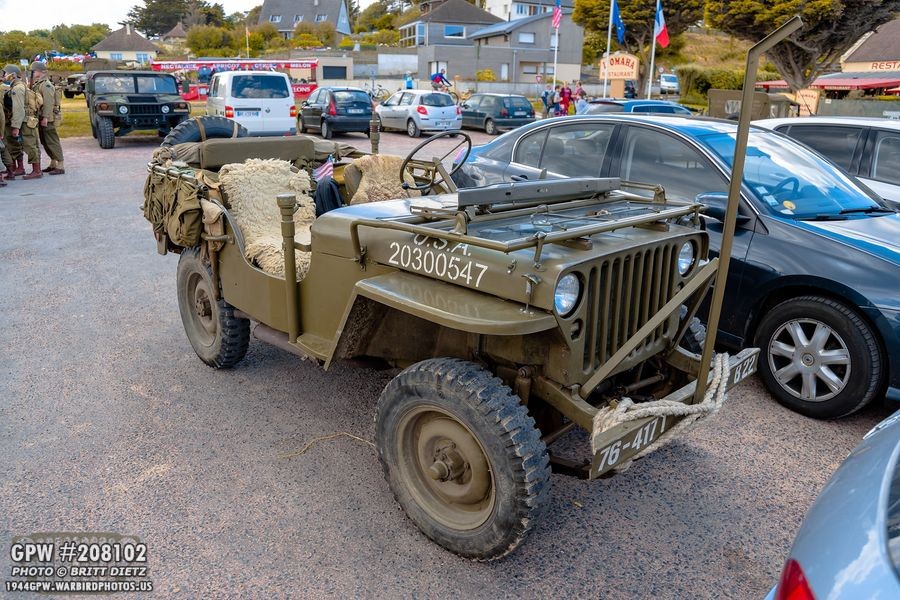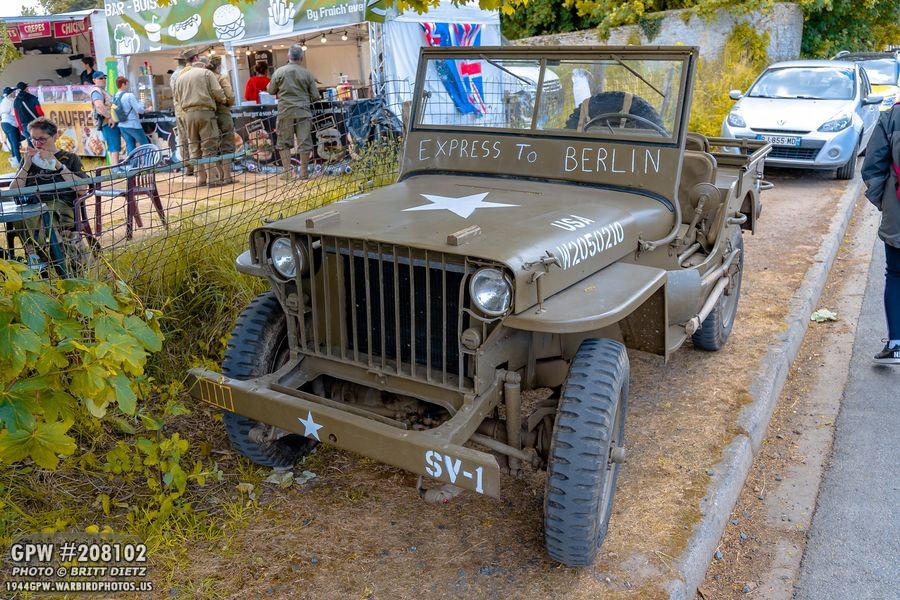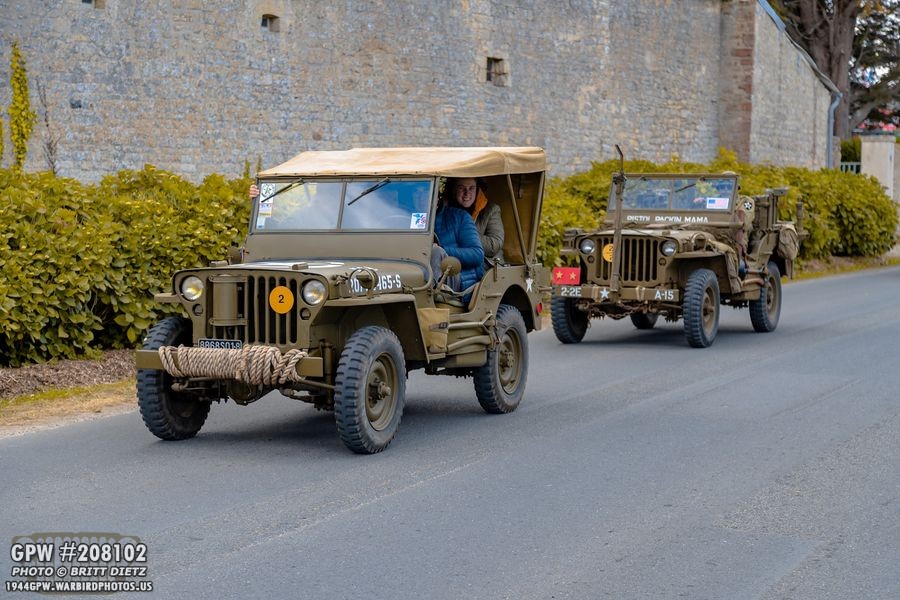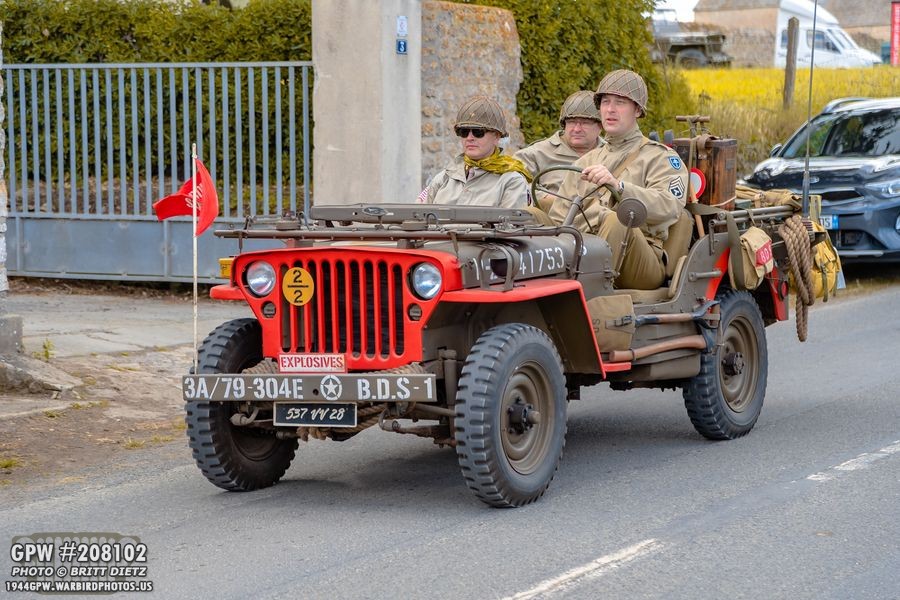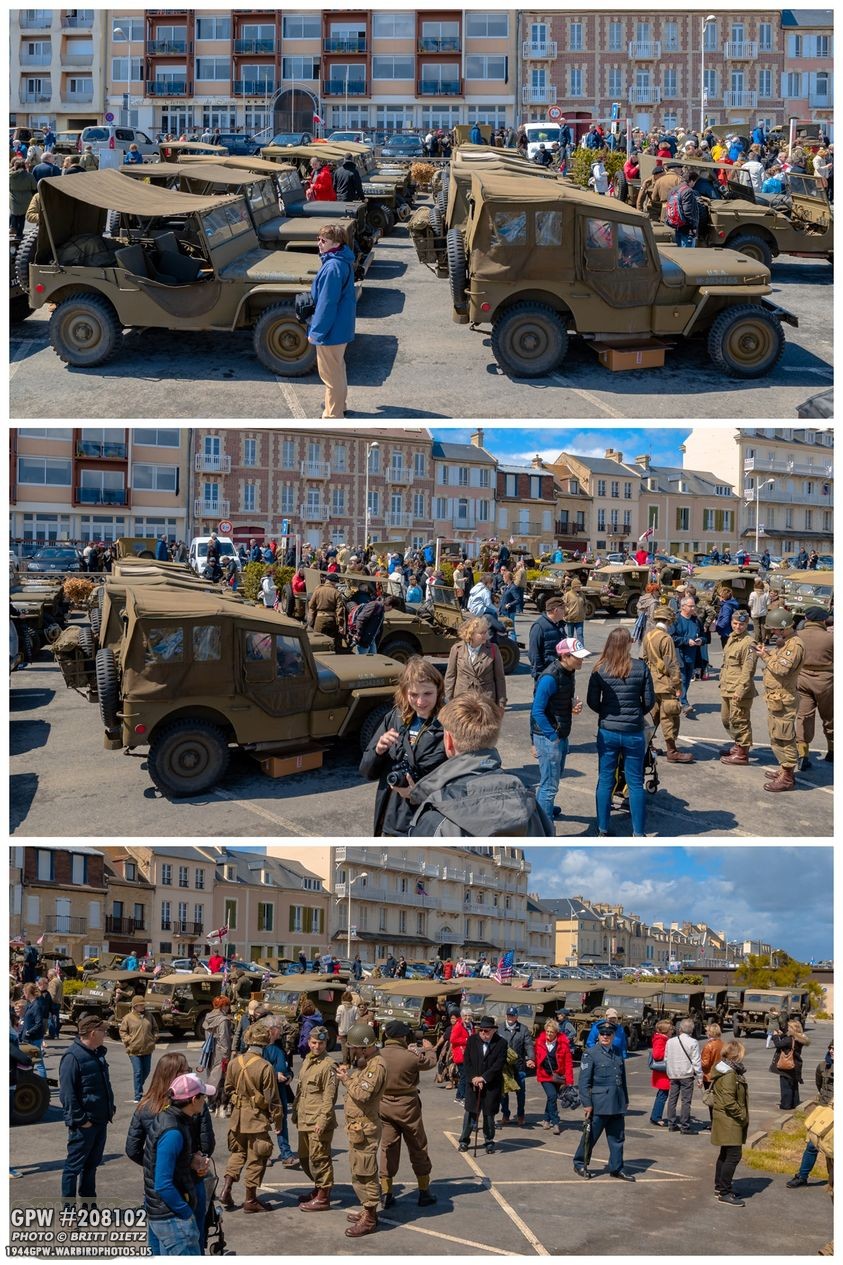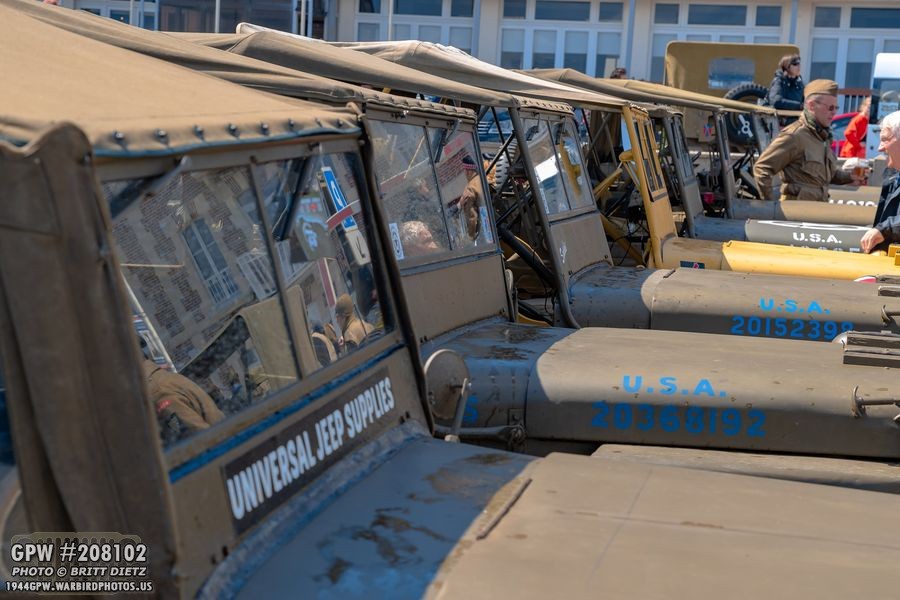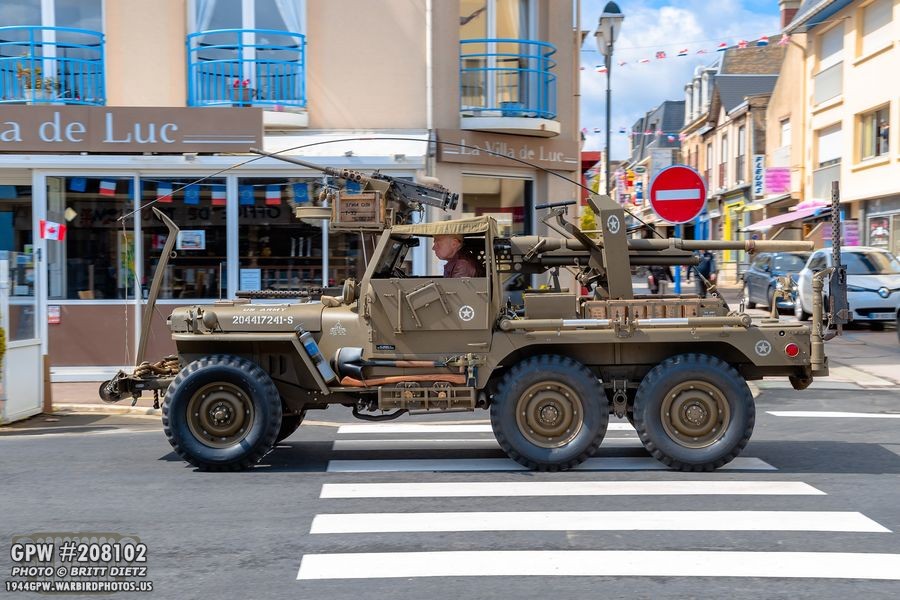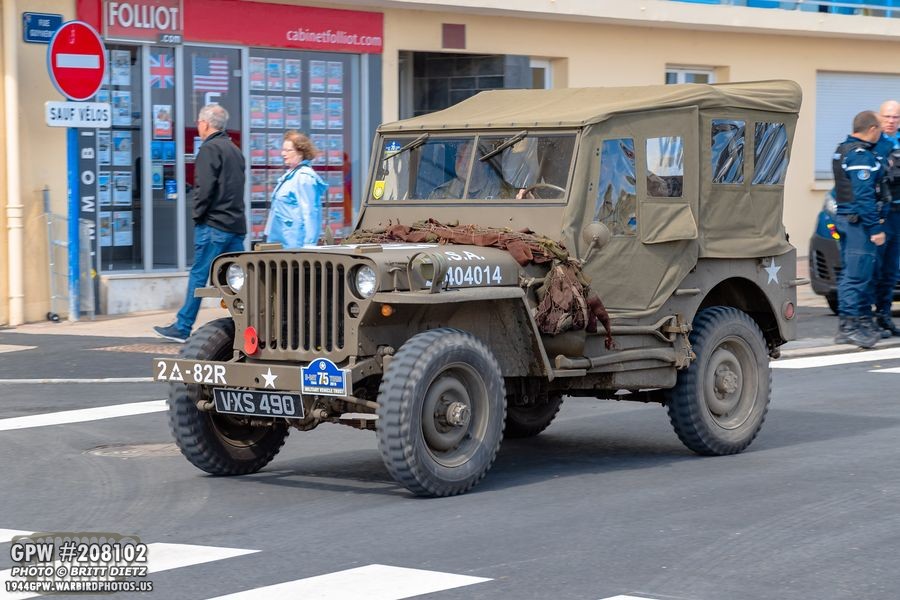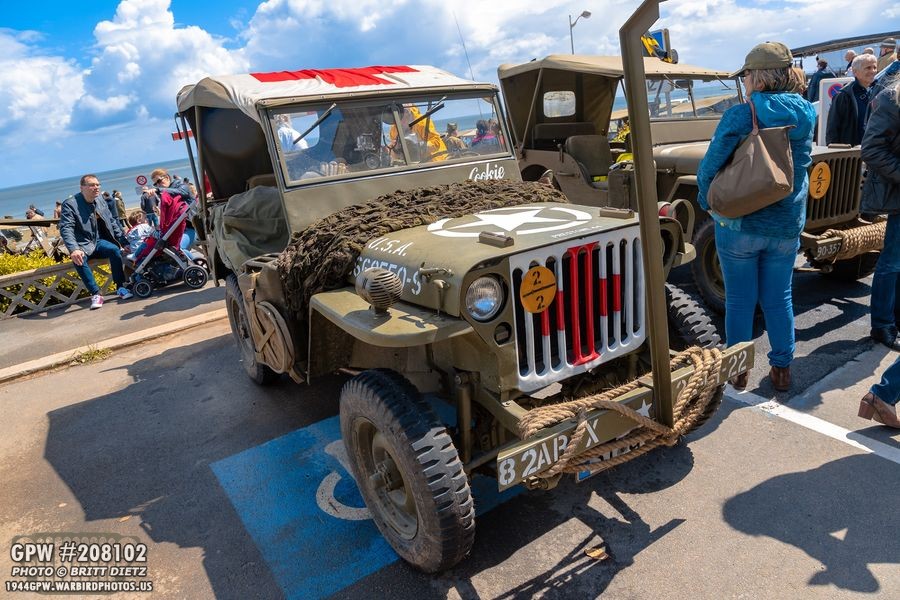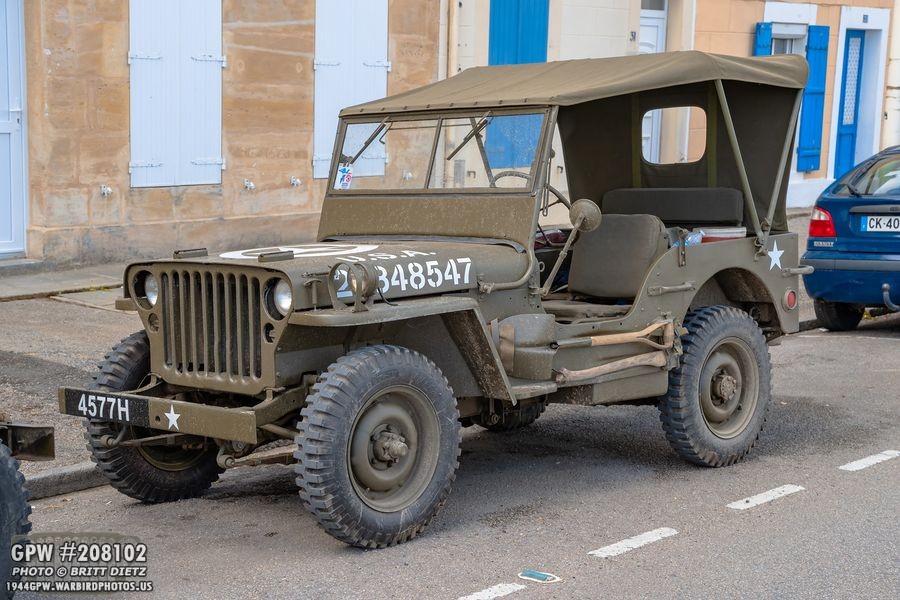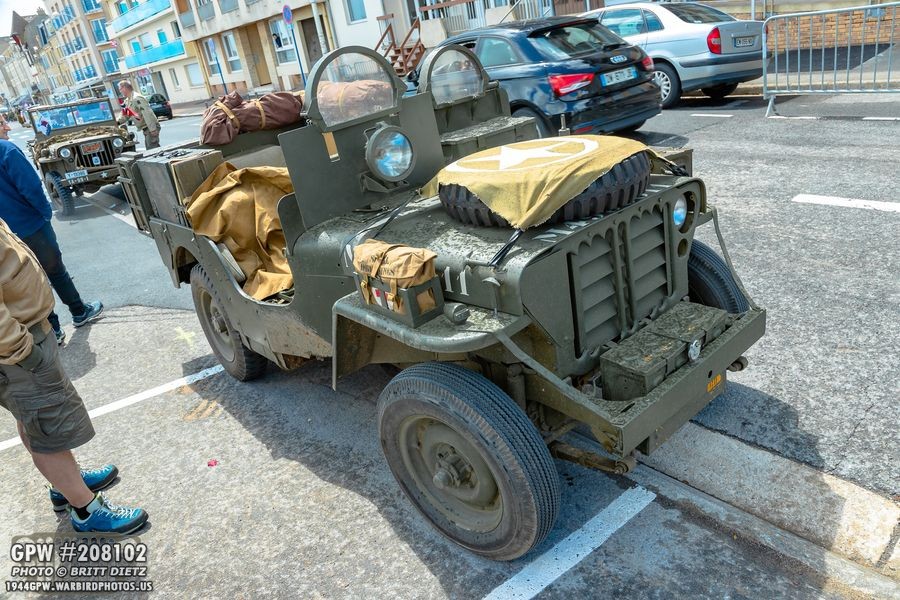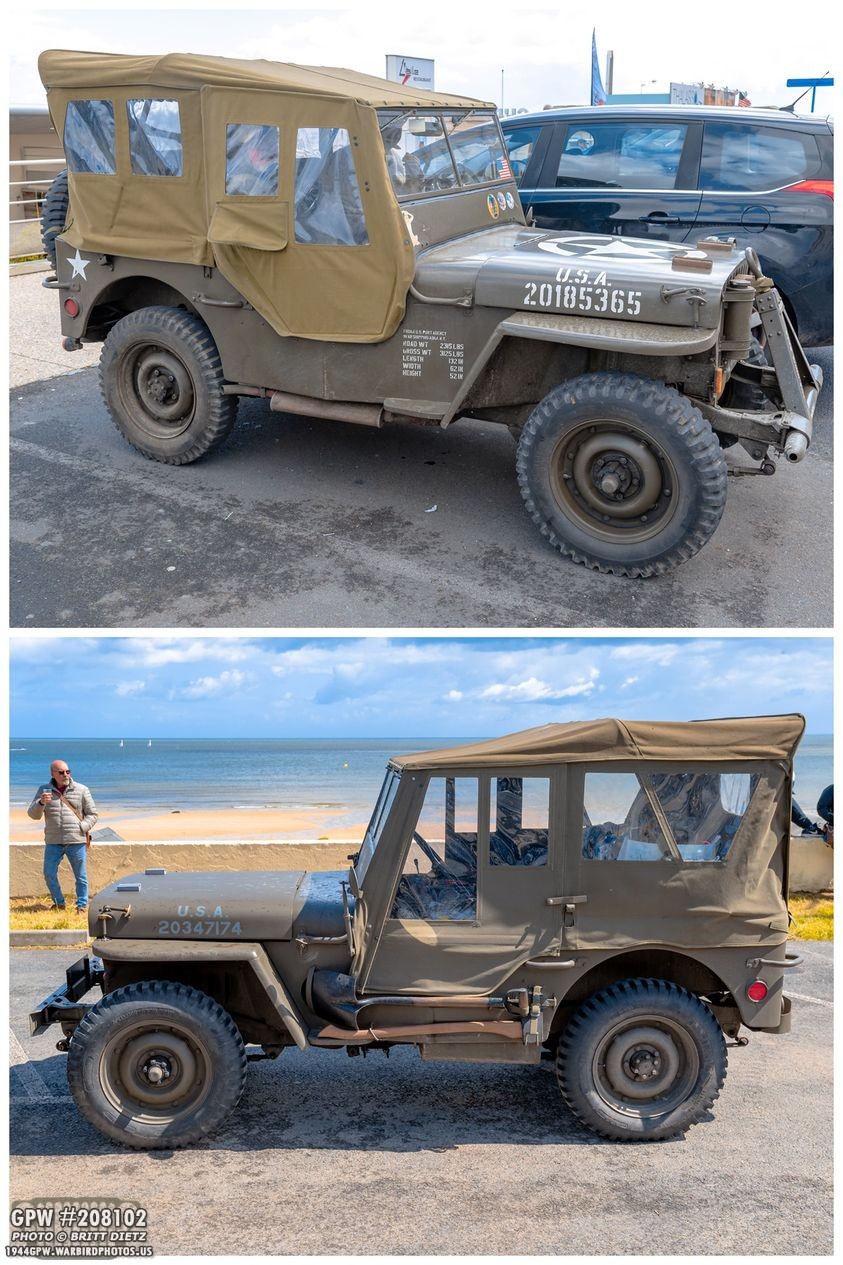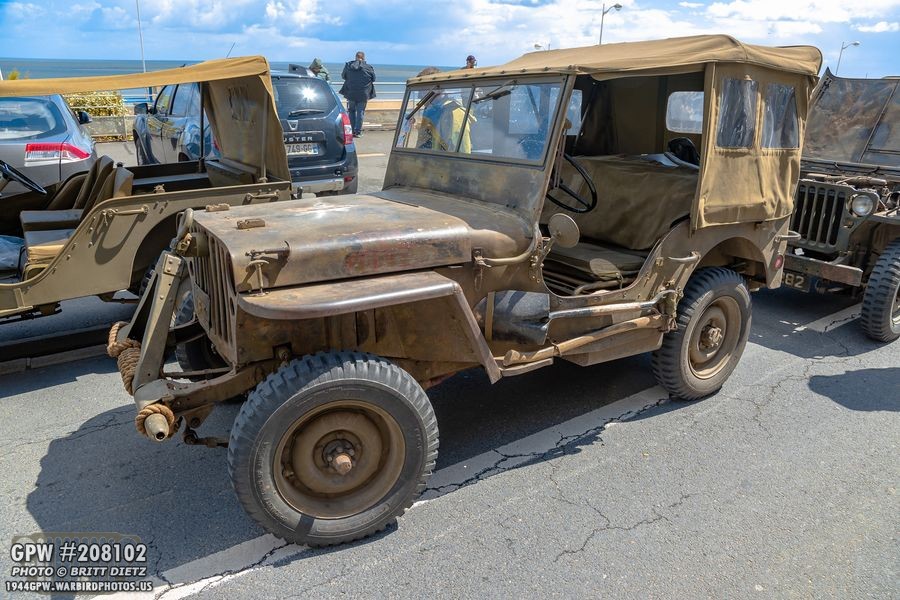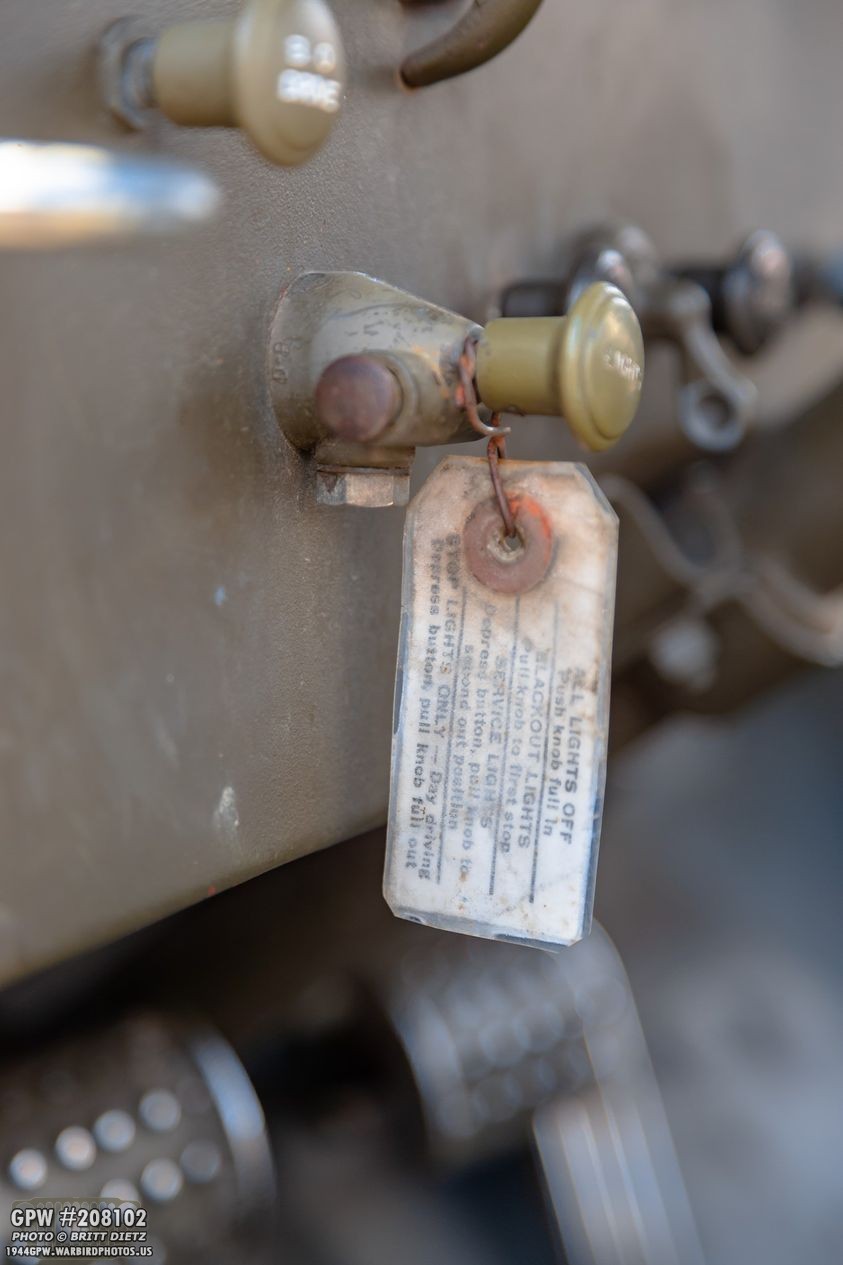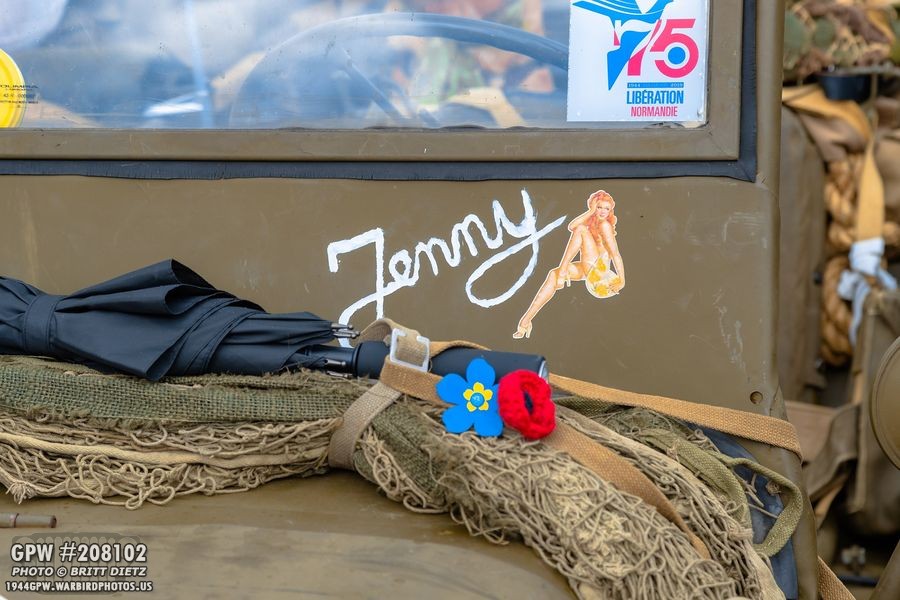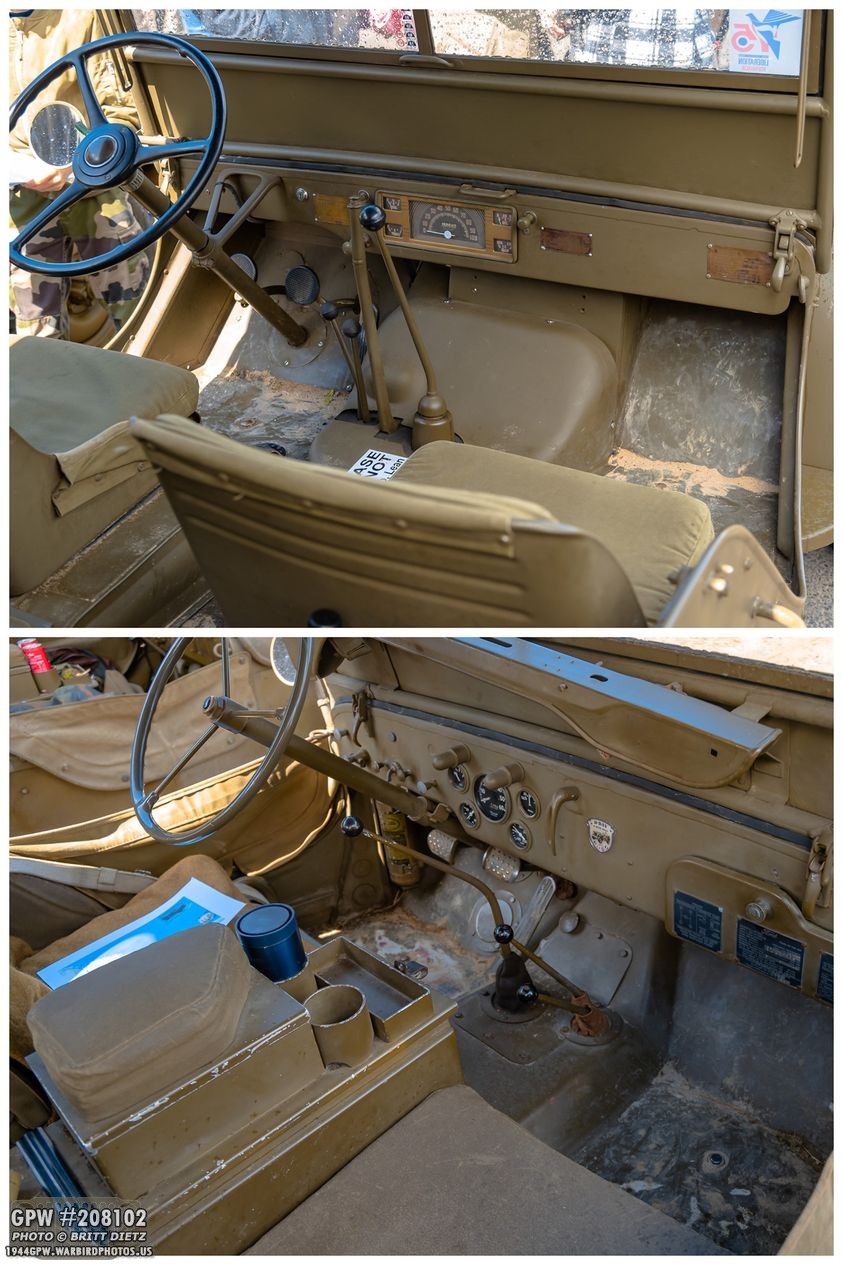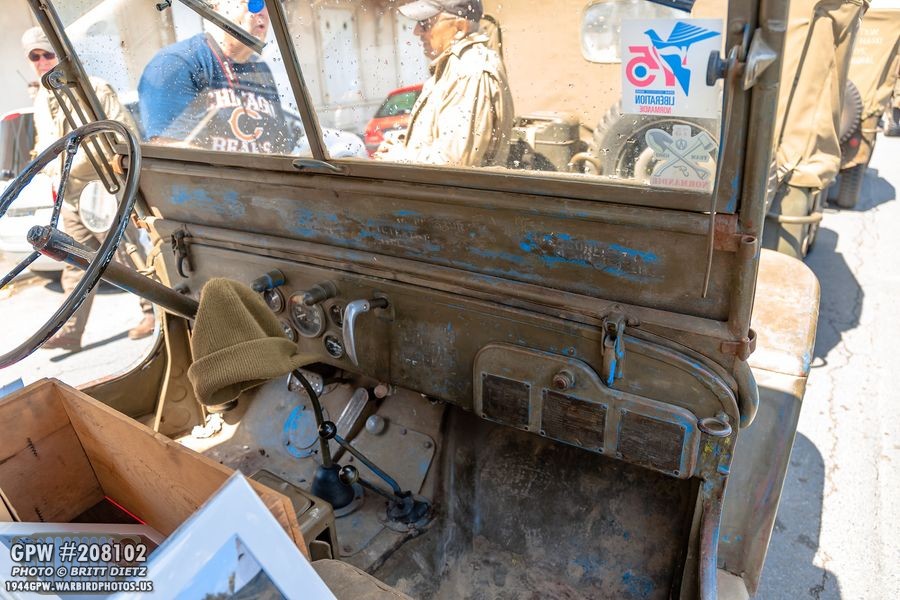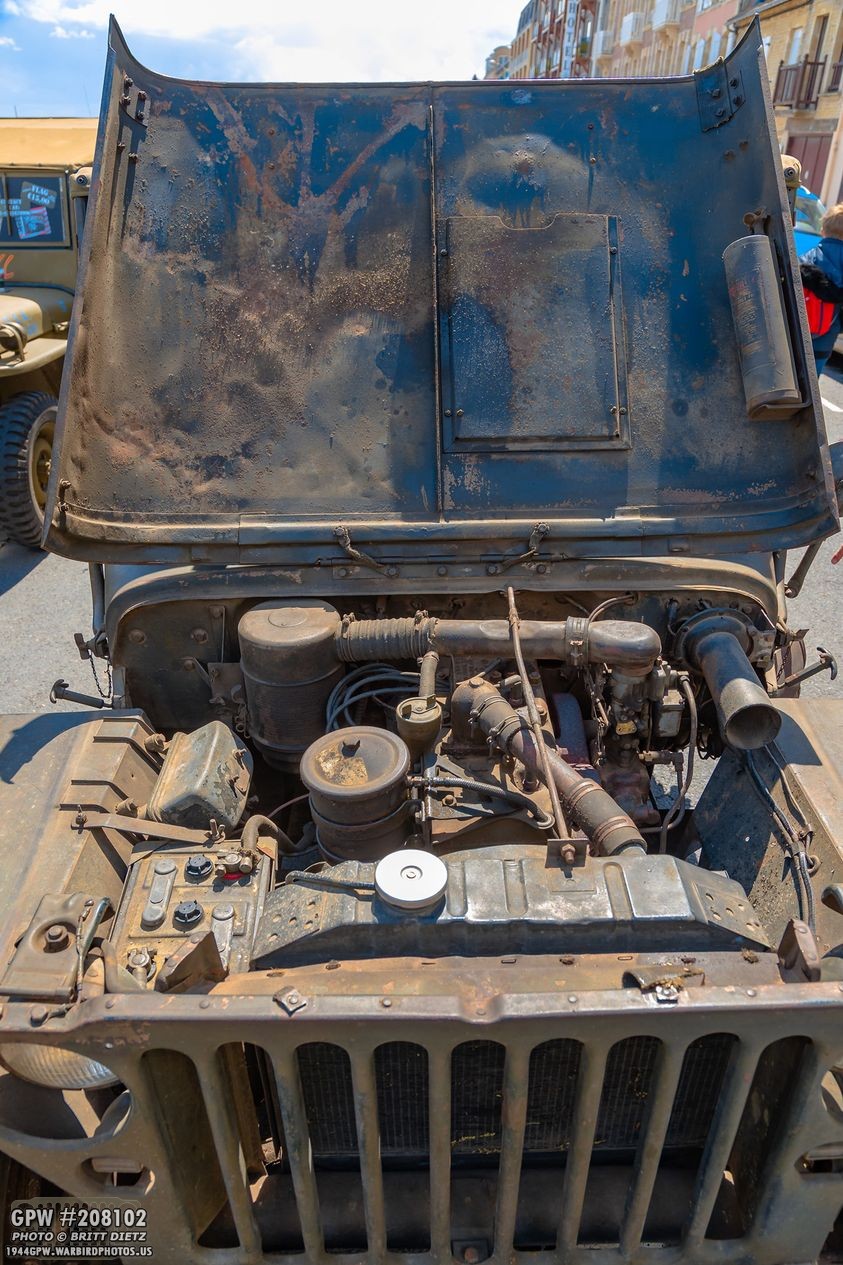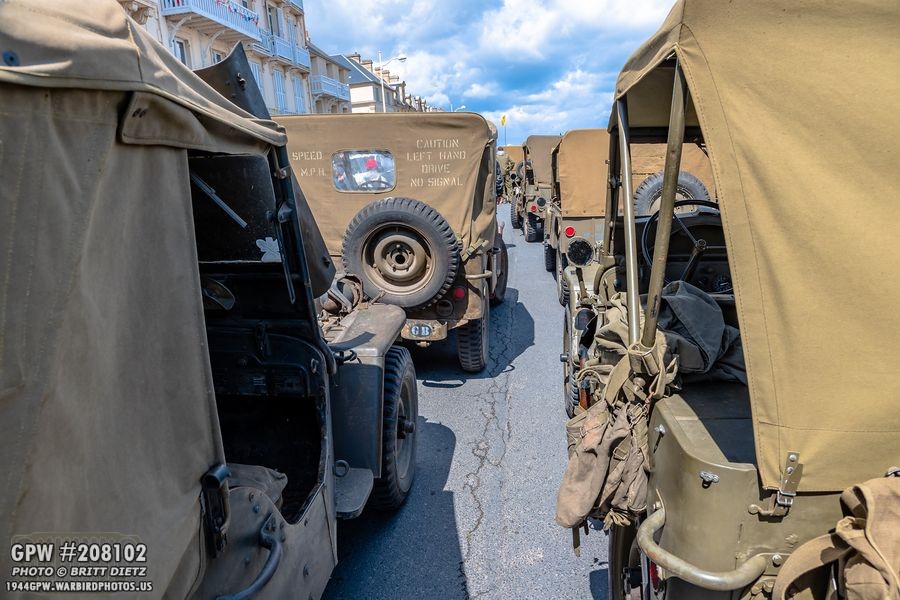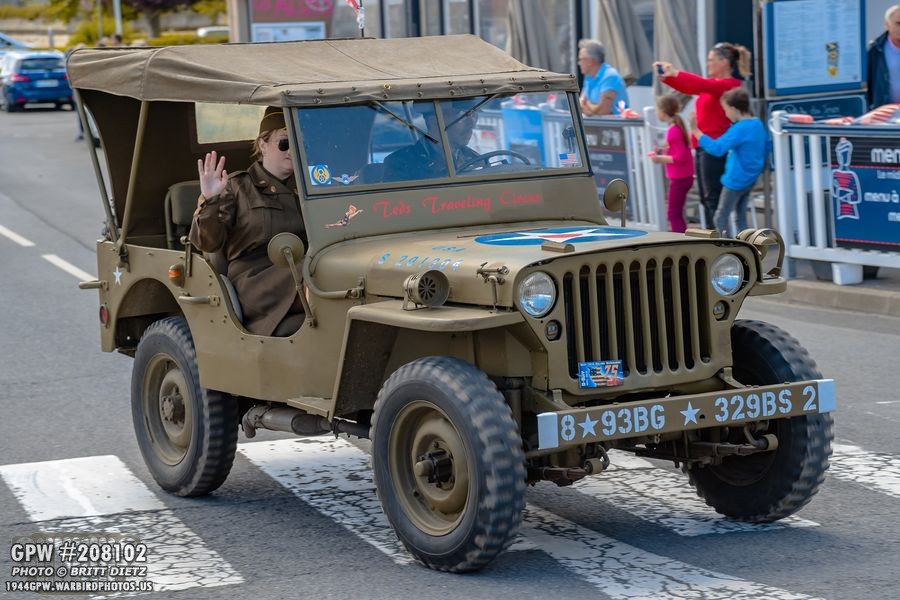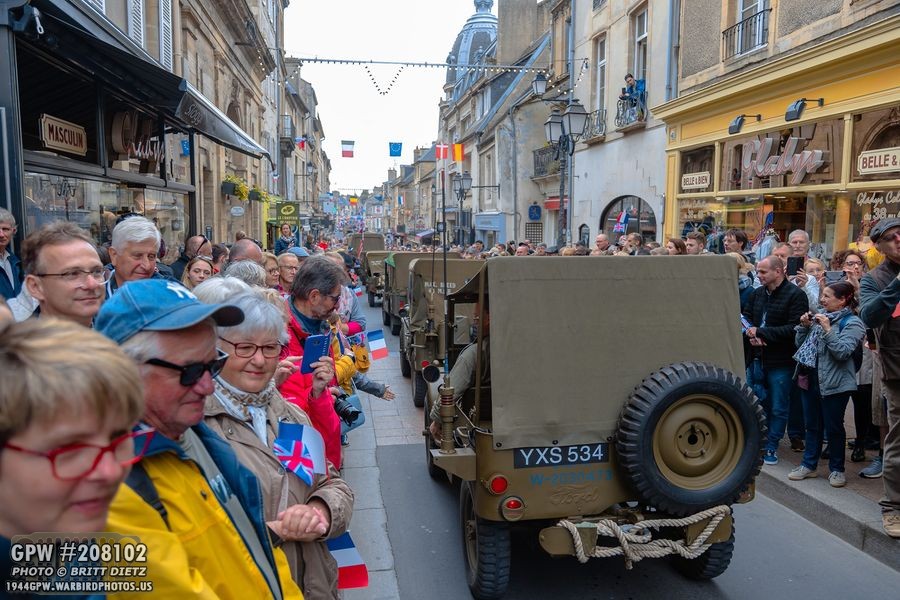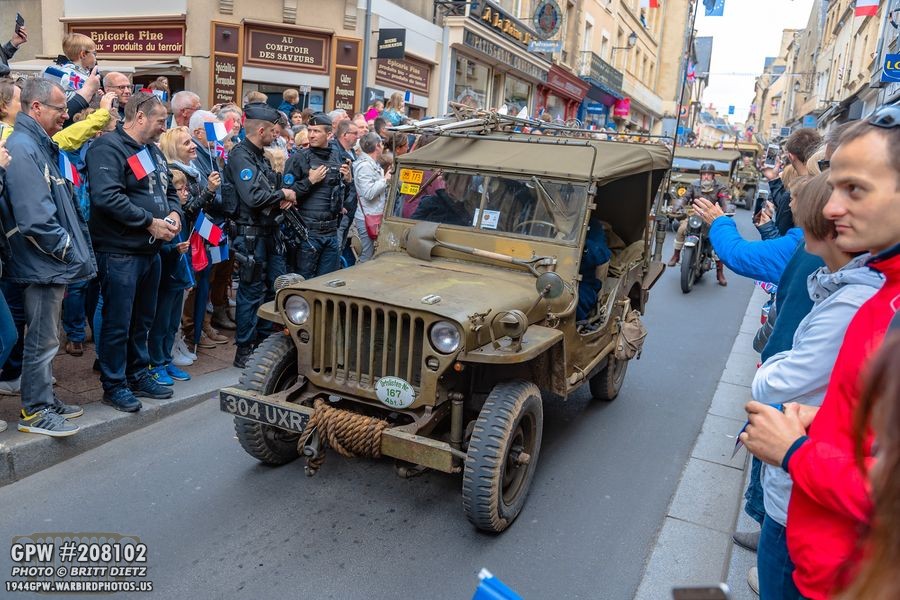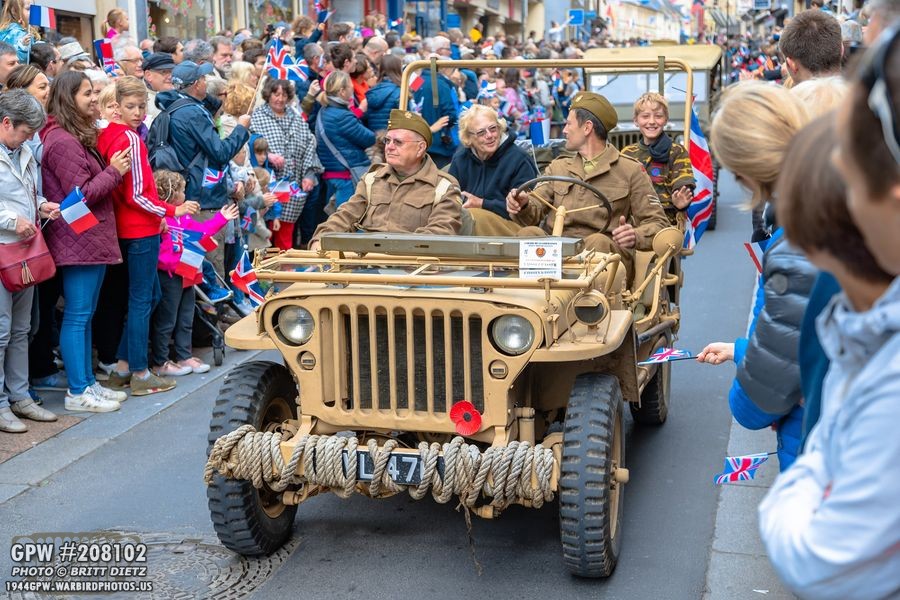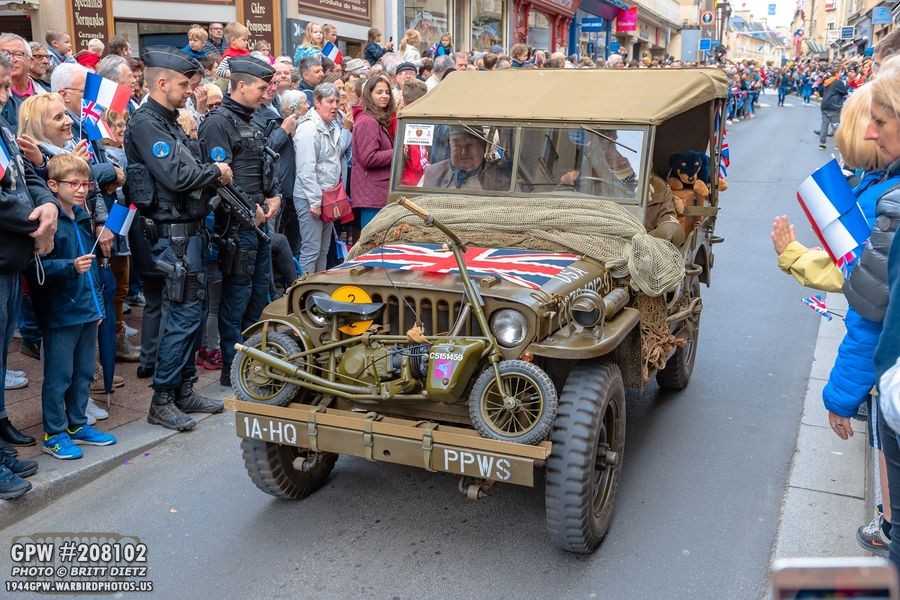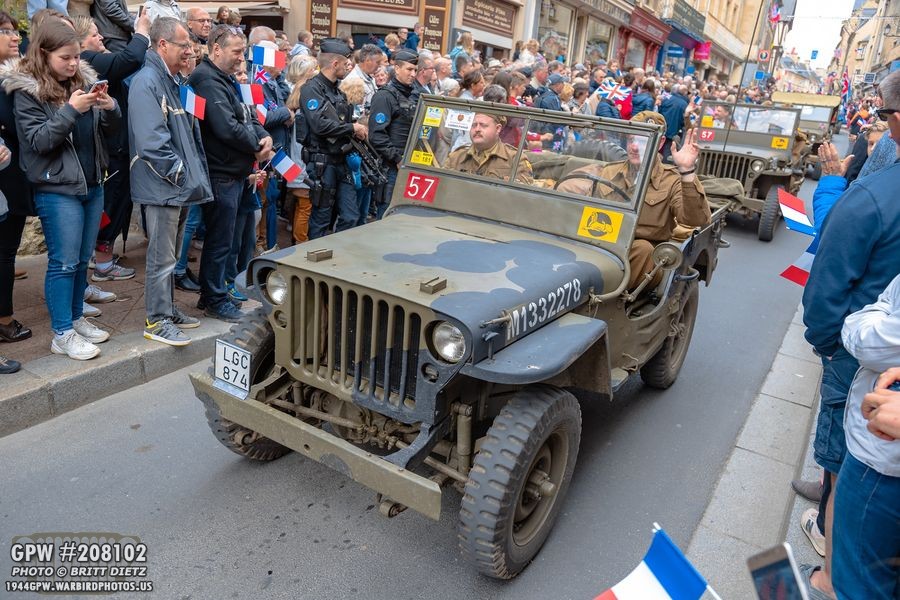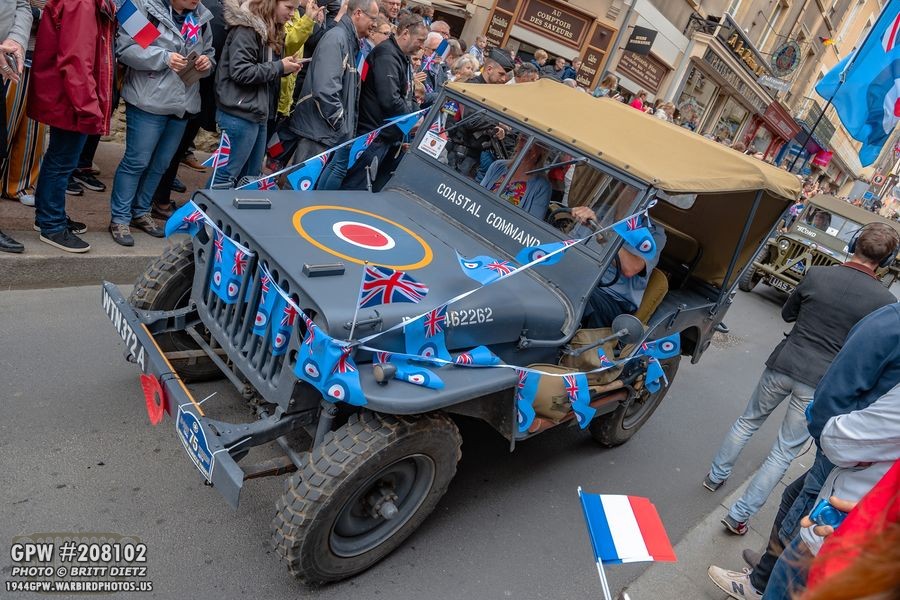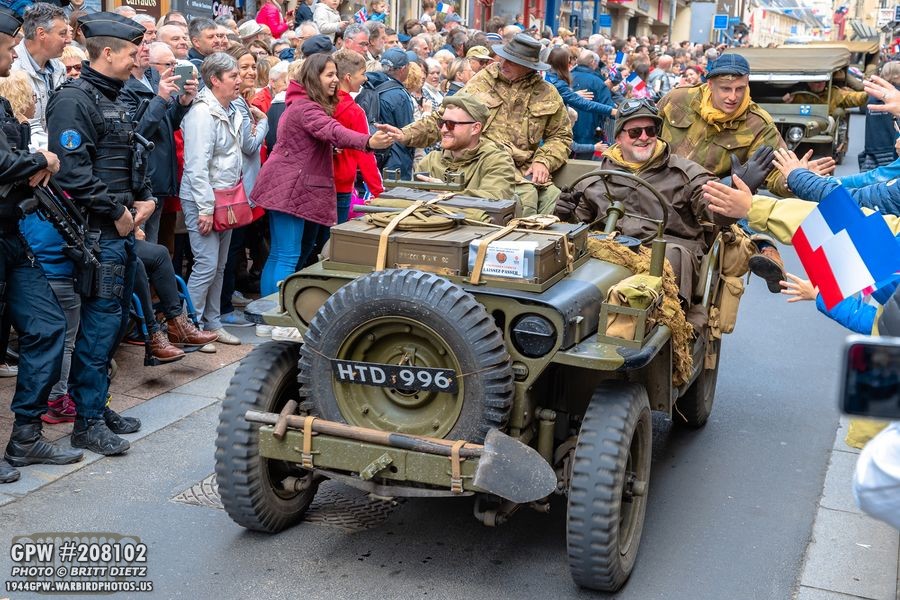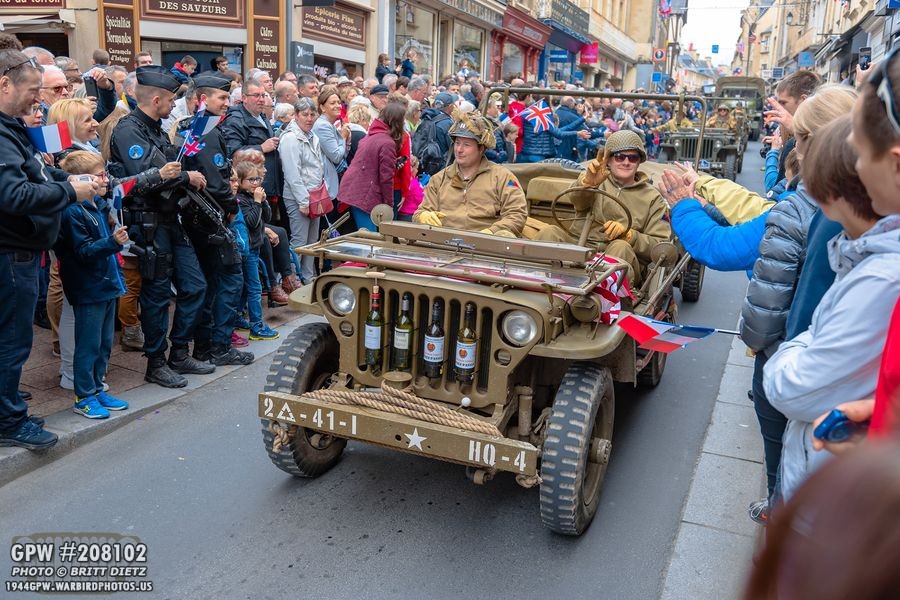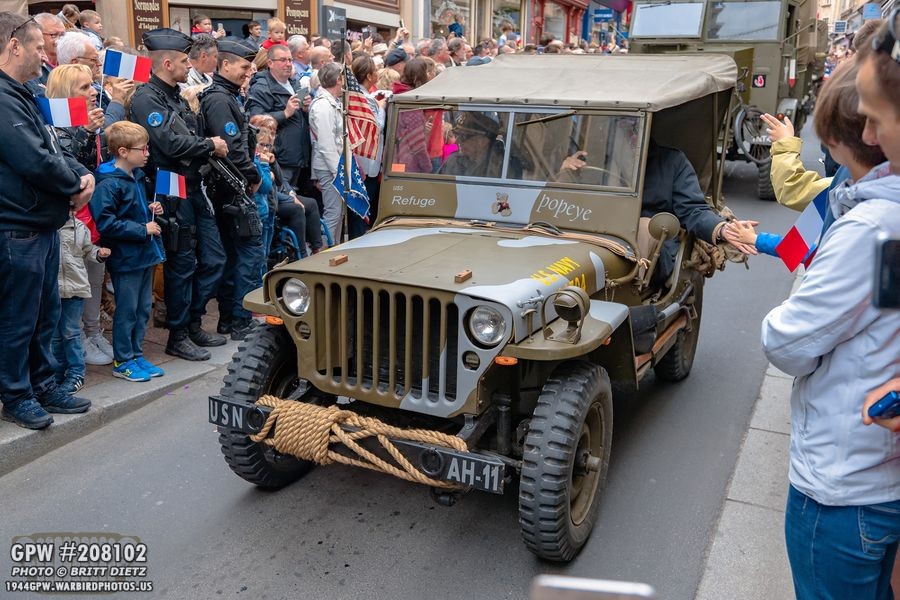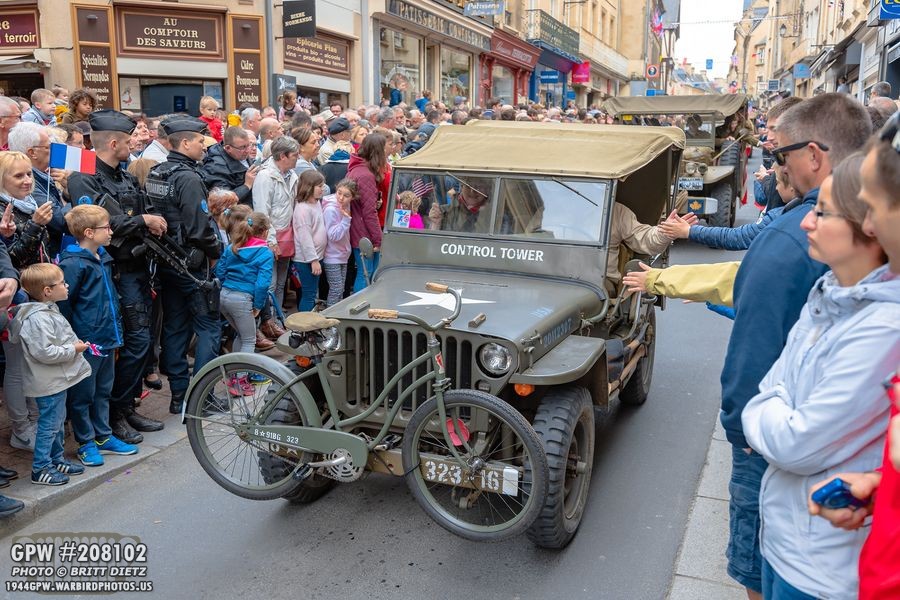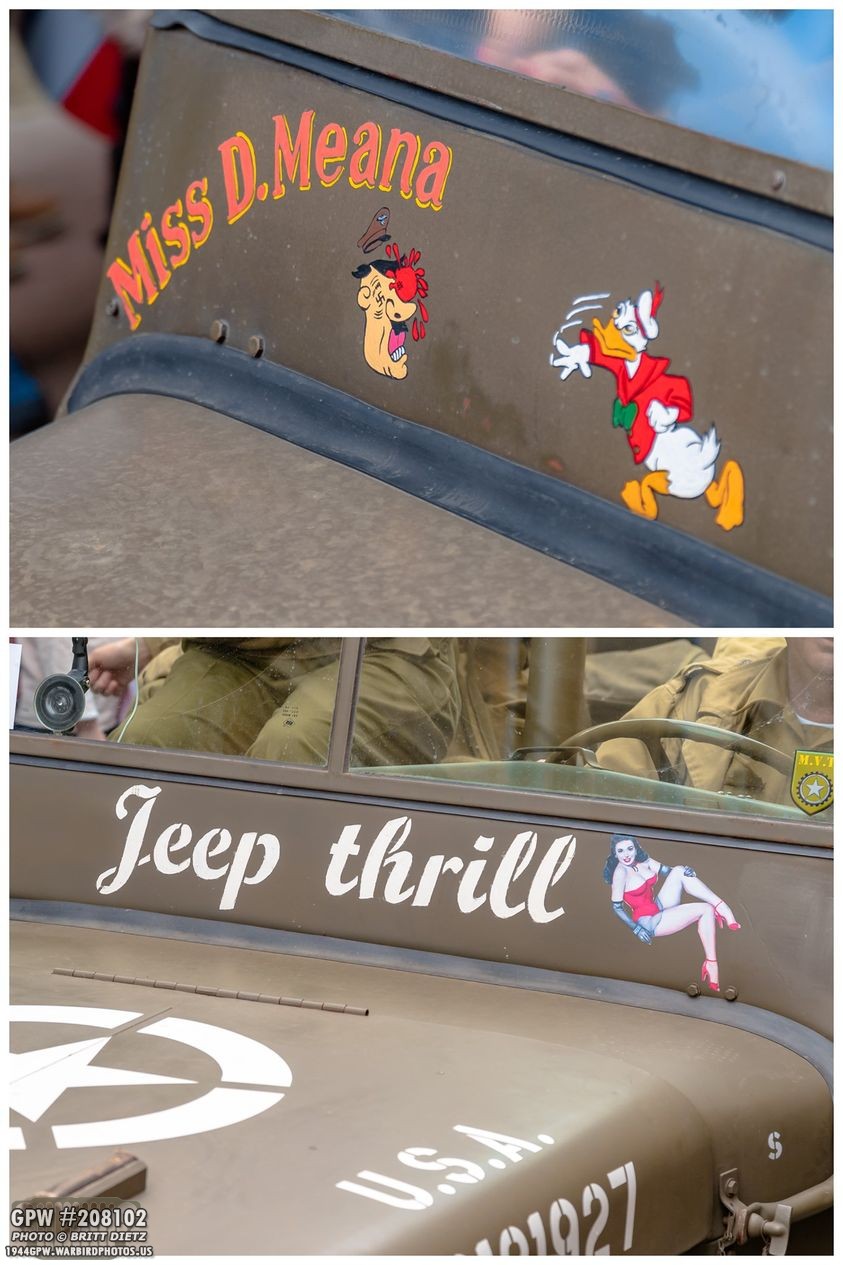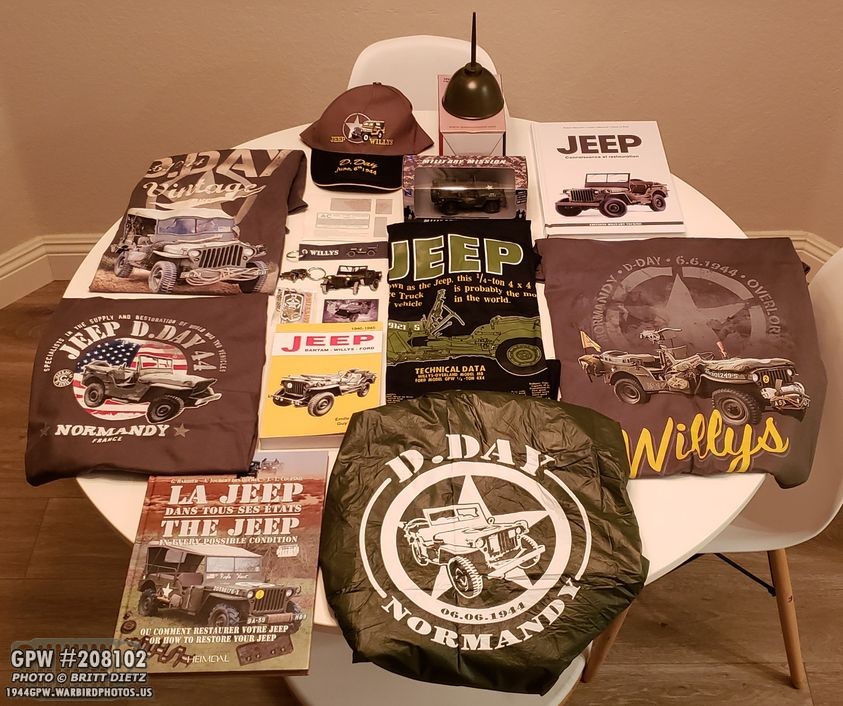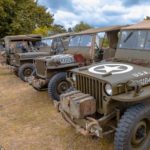 SPECIAL UPDATE – Jeeps in Normandy!
SPECIAL UPDATE – Jeeps in Normandy!
This week I decided to do a special update about the Jeeps I saw in Normandy, France during the 2019 75th Anniversary of D-Day. I documented every single Jeep I saw during that time taking over 2,500 photos of Jeeps in five days! This update showcases some of the interesting Jeeps I saw around France and some of the Jeep events that took place. Looking forward to the 80th anniversary when I head back!
Starting off with a recent look at my Jeep, GPW #208102. While she’s pretty much finished now, back when I went to Normandy I was still smack dab in the middle of the restoration with a long way to go. I got a lot of ideas from the Jeeps I saw in France that went directly into my restoration. So let’s begin!
My trip started a few days before the 75th anniversary in Bayeux, France, where I was staying. While walking around the main city streets, I ran into this large courtyard with a few Jeeps parked. These were the first Jeeps I ran across during the trip, and I was already excited.
On the first full day in Normandy, I went to Sáint Mére Eglise. Location of the famed landing spot for several members of the 101st Airborne during D-Day. I had heard that there was a military vehicle camp just outside the main city, but I was unprepared for what I would see. Keep in mind, this was my first time to Europe and this was the big 75th anniversary!
The camp outside of Sáint Mére Eglise was absolutely incredible. There were SO many Jeeps of all makes, models, configurations. I spent way too long documenting all of them!
One of the most interesting things about seeing so many Jeeps is the variations of paint from Jeep to Jeep. Even on individual Jeeps, the paint could vary. Early, mid, late war paints and the various manufacturers made me realize just how many different shades of OD Green there are. I could see this being similar out in the field during WW2 where paint could be thrown/mixed together giving slightly different shades of OD Green on the war-weary Jeeps.
Lusterless 33070 OD Green, like my Jeep and this one here, was for sure the most common color I saw. I feel it’s the most appealing Jeep color. This Jeep is sitting next to the Sherman Tank used in the movie Fury.
Here’s the first Army Air Force Jeep I spotted. Since I hadn’t gotten to the point of marking my Jeep, I was still gathering ideas and WW2 references on AAF Jeeps and their typical markings. So I made sure to heavily document AAF Jeeps. This is one is a 9th Air Force Jeep, but not sure what the 821 DP is.
One of the more colorful Jeeps I ran across was this awesome 92nd Bomb Group, 8th Air Force ‘Follow Me’ Jeep. I actually, for a short time, considered painting my Jeep like this (or a more subdued Follow Me version), but I ended up going the more classic style. The detail on this Jeep was rather impressive.
It was interesting to see the other brand Jeeps as well, such as this US Marine Corps Jeep and the hunter green paint. Very clean Jeep! As someone who keeps their Jeep really clean, I tip my hat to the owner of this one.
Not that the dirty Jeeps were bad by any means! I could tell a lot of the Jeeps had been having fun in Normandy, like this Military Police one. One thing I noticed is the lack of combat rims on a lot of Jeeps. That was a bit surprising for me as I figured most Jeep restorations had them. I also was interested in all the different fonts and star sizes on the hood. I’d say the ratio of Jeeps with canvas tops vs without was split down the middle 50/50.
A rather unique Jeep right off the bat, an early Slate Grill Jeep with an awesome portable airborne motorcycle mounted to the front! Pretty awesome.
I documented the insides of each Jeep as well. It was great to see the variations between each one. I’ve debating adding a rifle rack to my Jeep, as it was often the first thing removed from Jeeps in Army Air Force service. But, I LOVED the black and white pinup photo on the rifle rack in this Jeep. I plan on doing something similar eventually with my Jeep (though with a 1940s photo like this with my girlfriend).
It was also neat to see Jeeps with the chemical changing paint like this one. This paint was applied to some Jeeps (mostly earlier ones as I recall) and the yellow paint would change colors when it would contact gas, like mustard gas. Now, I’m not sure if this is original paint used or modern paint to look the part, but I’ve seen many people use original paint that has been found on their Jeeps! Usually, it was hand-painted between the star and the outer circle.
Aside from Army Air Force Jeeps, I was on the lookout for Photographer/Press Jeeps. As an aviation photographer myself, I plan on doing something like this with magnetic letters for when I have my Jeep at airshows where I’m shooting photos.
Here’s a Jeep with several interesting items on it. This is where I started to really like the look of the covered headlights (I went further and cut slits into the canvas for blackout canvas covers, which I really like). This Jeep has all sorts of interesting accessories on it. One thing I wanted to point out was the orange turn signal lights on the grill. Sadly, in France vehicles are required to have turn signals, even vintage Jeeps. So they are forced to put them on like this. They are also supposed to have two stop lights on the rear, so they will often use two of the left driver’s side stop lights for this reason. Granted, I agree that it makes the Jeep much safer driving in public and would give you a bit more peace of mind, it’s still a bummer.
It was also great to see a bunch of US Navy Jeeps. This is one well-used Navy Jeep! My Jeep would have actually had a battleship grey color similar to this during WW2 since my Jeep is an ex-Jeep. I did toy with going back to a US Navy Jeep originally, but since it was my first Jeep, I decided I had to do the classic OD Green.
It was neat to see all the special variations of Jeeps as well, such as this elongated Jeep. The US Coast Guard often had Jeeps like this. Carried a lot more people. I’m sure the AAF would have benefited from Jeeps like this with 10 B-17 crewmembers all cramming into a Jeep to head out to the aircraft. I do like the US Navy battleship grey with the OD Green canvas. A nice contrast.
A bit of a celebrity Jeep, D&L Bensinger Military Vehicle Parts Jeep was also spotted there! This was one of the first Jeeps I saw with the full canvas winter setup.
Getting into the fine details, I’d known about the Ford etched glass, but I’d never seen one in person. After seeing this one on a GPW Jeep at the camp, I knew I had to do the same thing (which I ended up doing on my Jeep’s windshield in early 2020).
It was great to see all the little details and the variance between the Jeeps as far as bolts, star washers, etc. F stamps on the bolts for the hood catches are highly contested as never an actual thing on Jeeps, but I liked the look and did mine. Though, I made sure all the F stamps weren’t perfect.
It was common to paint the zerk fitting for grease throughout the Jeep red during the war. This way they stood out and were easy to see when checking the grease. The tie rods on the GPW front axle I go showed signs of having red originally, and that’s something I’ve still thought about doing but haven’t yet. It adds a nice little splash of color.
Here’s a Hotchkiss M201 Jeep, or a post-war French Jeep that made from wartime surplus/used Jeeps given to the french after the war along with new parts. Aside from the more Korean war/Vietnam style camo paint job, there are several differences such as the fender-mounted blackout light, the glove box, and dash instruments. This one has also been fitted with a roll cage.
Lots of Jeeps were completely decked out with canvas, gas/water cans, holsters, bags, camo nets, etc etc. I thought it was great there was such a variety! Each one of the Jeeps in this shot have their own unique things.
Another thing I saw a lot of (for good reason) was anti-theft measures. I’ve read that Jeep theft in Europe is, sadly, common. There are a lot of ways to steal a Jeep, even if do things like disconnect the battery, distributor, etc. What I saw most common was using locks and chains.
The top photo shows a way that was actually adopted during the war and just after… another safety strap eye was added just behind the main shifter. You put the shifter in reverse (the highest the shifter goes) and then put a lock around it and the eye. That will prevent the Jeep from doing anything but going backward.
The bottom photo was the more common method I saw in France, lots of chains/wires/etc going in all different directions to lock the steering wheel and make it difficult to sit in the driver’s seat.
Personal Jeeps were not the only thing I saw a lot of, each museum had its own Jeeps as well in different configurations. Some you could even sit in. This one demonstrated a glider infantry team (presumably) just having departed from the glider on the right. I love the one canvas-covered headlight and the other is a blackout light instead of the normal bulb headlights.
All in all, that camp just outside Sáint Mére Eglise was really impressive, and I didn’t think I’d be able to top all the Jeeps I saw there, but that was just the beginning!
The next day, I ran into more Jeeps while going out to see a C-47 Skytrain drop paratroopers just behind Utah Beach. Here’s a great-looking US Coast Guard Jeep. This one stood out to me because it was correct for how most US Navy and US Coast Guard Jeeps were painted. They came from the factory painted OD Green, so the Navy and Marines would paint the battleship grey (or hunter green) over that OD Green. That meant that the frame and most areas under the fenders/body tub/etc were still OD Green. So props to the person who painted this one very accurately!
Here’s another great paint job on this US Navy Jeep near Utah Beach. Notice the frame, just past the front shock, and the springs are all OD Green. Great attention to detail. If the cameras in this photo weren’t modern and I converted this to a black and white image, I could probably make this look like a WW2 press joyride!
Of all the Jeep photos I took during the trip, this one is the most special. This is the morning of June 6th, 2019 at 6:30am local time on Omaha Beach… 75 years to the minute the invasion began. The sunrise was beautiful, and while it looks like a lot of people, it wasn’t very crowded. Someone drove up with this Jeep and parked it to get some photos, and I joined in as well. I could not think of something more perfect for that moment. Thank you to whoever owns this Jeep.
Not long after, a convoy of Jeeps arrived taking an early morning June 6th drive on Omaha Beach. It was incredible to see the random Jeeps pulling up. I only had a split second to snap a few shots here before they turned around and headed back. I’m sad, as the Jeep third from the left is a 95th Bomb Group marked Jeep! Same as mine would be! I didn’t realize until after they were driving away.
The rest of the morning, this was the scene pretty much at any of the D-Day beaches, with Jeeps randomly out for rides to commemorate the historic day. Lots of American flags were waving.
It was neat to see all the different types of Jeeps from early Slat Grills to the later models. Both of these were on Omaha Beach as well.
Up near the end of the beach, I spotted this amazing American Red Cross Jeep hanging out Donuts, something straight out of WW2. Absolutely loved this setup. Note the canvas half doors and the cushions with the correct springs in them! They had some 1940s swing music playing as well.
Later in the morning, I stumbled across a large convoy of military vehicles (Jeeps, tanks, half-tracks, transports, ducks, etc) converging near Omaha Beach. This Jeep, obviously, was the lead vehicle for the parade down the beach. Nice pops of color.
While not accurate that I’ve seen for WW2, I have to say that after seeing this amazing pinup I thought a while about doing something the same with my own pinup work (plug: https://instagram.com/vintagepinups). I love how this looks! This Jeep was getting a lot of attention. If nothing else, I might do something like this with my original hood that I couldn’t use so it’ll be wall art.
There were a ton of Jeeps in this line-up. Here’s another US War Photographer press Jeep (for the 82nd Airborne) I found.
I really liked this simple PRESS Jeep.
The military vehicles set out for a nice long parade down the beach (on the main road). Here’s a nicely decked-out Jeep with a trailer. Note the Coca-Cola wartime crate in the back trailer. Seeing these on several Jeeps eventually gave me the idea to build my own from scratch, which you can read about here: https://www.1944gpw.warbirdphotos.us/blog/battery-enhancements-blackout-headlight-covers-coca-cola-crate/
I also loved this awesome armored Jeep. I’d seen photos of these but not seen one in person. It looks like it came right out of the Ardenne Forest!
Another US Navy Jeep, this one was a bit… blue. Interesting vivid color for sure!
Another Jeep having some fun on the beach. This was pretty much the scene all day. I wish I’d gotten over to some of the other beaches that day to see what gatherings they had, but most of the day was spent on Omaha. Seeing sights like this made me really wish I’d been done restoring my Jeep and I’d been able to bring it over to France.
I saw several great ways to display flags on Jeeps throughout the day as well, such as using the hood and the radio wires to display the American and French flags. Also, note the fire aid kit mounted to the fender. The baggy canvas top, I believe, is from a winter canvas enclosure kit.
I loved all the different names for Jeeps as well. This one happened to be the name of my girlfriend. Also, neat way of using an additional pair of grill Marker Lights as turn signal indicators.
While checking out one of the museums just off Omaha Beach, I found this GPW Jeep sitting in the parking lot. I got to talking with the owner and he opened up the hood for me to check out and get some ideas. It’s a very nicely done GPW engine. This was the type of detail I had been really wanting to document!
At the Musée Mémorial de Omaha Beach, they had this Jeep on display depicting the landings. I’d love to know the history of these Jeeps and if they actually served in the landings.
At the front of the same museum, this really cool US Navy Jeep is being offloaded from a Higgins Boat.
At the Museum of the Battle of Normandy in Bayeux, they had a section on WW2 war correspondents including this PHOTOGRAPHER Press Jeep. That’s how I hope to do Photographer on my Jeep (with magnetic letters) for airshows where I need to use it as a golf cart, of sorts.
Since I was ever on the lookout for any Army Air Force Jeeps, anytime I saw Jeeps that had the white tips on the front bumper, I started shooting away. It was interesting to note how many non-AAF Jeeps also had white tips. Fooled me every time.
Pretty much anywhere you’d go in France, you’d find a Jeep parked in every lot. This Jeep here must be one comfy ride with the sheep wool seat covers!
Inland from Omaha Beach at another reenactor camp, I discovered this Slat Grill that I thought had a good name. I’m not joking when I saw I feel you could throw a rock any direction and find a Jeep somewhere nearby! My girlfriend commented ‘So, this is your heaven then?’
And I think that added to the incredible experience of being there. Seeing Jeeps driving around every street randomly along with so many other vehicles gave you the sense of what it was like when the Allies took France and Jeeps patrolled/drove through the streets. Though, we almost were hit by a halftrack going down a little one-lane road that popped out of nowhere. I didn’t see too many shovel covers on the pioneer tools, but this front Jeep had one.
Another very colorful Jeep, an Bomb Disposal unit Jeep. These unique Jeeps are really cool looking to me. Some Army Air Force Jeeps had the edges of the fenders, handles, and rear tub painted white for better visibility during foggy English days. I’ve often thought about doing that to my Jeep just to make it pop a bit more with some unique paint. Trying to find just one example of a 95th Bomb Group Jeep having those special white markings and I’ll instantly do that to my Jeep. Also, note another shovel cover.
While I’d seen more Jeeps in two days than I’d seen my entire life… I wasn’t prepared for the big G503 meet near Luc-sur-Mer. If anything was heaven… it was this massive meetup. It was Jeeps in every direction.
Seriously, there were SO many Jeeps. I feel every different type of Jeep you could possibly think of doing was there. MB, GPW, Hotchkiss, Frankenstein Jeeps, etc!
Even this beast, which I thought for the longest time was some person’s wild fantasy Jeep until I realized (sometime later) that it’s actually a real Willys T-14 with a 37mm gun! Look it up, seriously, it’s a real thing from WW2. This Jeep is a 6×6 instead of a 4×4,
I saw several Jeeps with the canvas winter enclosure kits. I’ve thought about doing this to mine as I like the look and how it makes the Jeep more enclosed. But, they are expensive, and most often they require drilling into the windshield, body tub, and top bows… which I don’t want to do.
Another colorful Jeep, this medic Jeep. Very well done with the grill paint job.
You could instantly tell which Jeeps had been having fun on the beaches… Most of them will need a good washing to get the sand and salt water off.
Another fascinating Jeep was this heavily armored Jeep. I believe this is a Commando Jeep.
As far as canvas winter enclosure kits, I saw two distinct styles shown here. The top was the most common, while the bottom I only saw a few times. Turns out, both of them are technically wrong. The actual WW2 winter enclosure only has small tiny windows in the canvas, making it rather hard to see. Most modern canvas makers now make them with the larger windows, shown here, so you can actually see outside the Jeep when driving. Even knowing this, I still think they look really neat regardless, and it’s close enough!
Another Jeep with the winter kit and, what appears to be, unrestored. Either that or the paint has really faded. This look isn’t too bad with half of the winter kit (without the doors). That might be something I look into if it doesn’t require modifying the top bows and tub.
I spotted one Jeep with a laminated push/pull switch tag. Not sure if it’s an original (obviously the lamination is not), but that, again, inspired me to make my own perfect replica tags which you can read about here: https://www.1944gpw.warbirdphotos.us/blog/small-projects-and-extras/
Another great ‘windshield’ nose art with a lovely Varga pinup. I’d say about 10% of the Jeeps had pinups. Some were actually painted on VS stickers.
Two very different Jeeps here, the top ones an early GP with a very different early gauge configuration, and the bottom one has an interesting center console storage, cup holders, etc.
This Jeep looked to be not restored at all with original paint! It’s near to see the original markings they discovered after sanding. Just goes to show the range of Jeeps seen, from the unrestored to the pristine perfect!
Another lightly restored or well-used Jeep. There weren’t too many Jeeps with the hoods open at the event, unfortunately. But this one has a lot of nice original parts.
I shot a LOT of photos at the Jeep meet, and got to meet Ron Fitzpatrick from Ron Fitzpatrick Jeep Parts. I was hoping to meet Scott Schiller, but he was so busy that day I only saw him from a distance. It was a great way to start the morning and still is the coolest military vehicle event I went to! As the meet ended, the Jeeps all left in a giant convoy, which was really awesome to see. Maybe one day, my Jeep will be a part of this!
Another really memorable thing about the 75th Anniversary was randomly stumbling across a parade or mini-event while traveling around between the beaches. Near Juno Beach, I ran into a small impromptu parade of military vehicles which included even more Jeeps (most I’d not seen… hard to believe as that is with all the events and places so far!). Included in that little parade was this 93rd Bomb Group Army Air Force Jeep. First time I’d seen someone do the AAF Star on the hood, which is something I’ve actually seen in a photo or two from WW2 with AAF Jeeps. I also considered this, but I’ve yet to find a 95th Bomb Group Jeep photo with a star like this.
The next day, I got up early to head down to the main road in Bayeux for their Liberation Parade. This parade was mostly French/British marked Jeeps and military vehicles, but there were a few US Jeeps in the mix.
Another unpainted/heavily used Jeep with some interesting additions. First time I’d seen the shovel mounted to the windshield! I’d imagine that would make the windshield unable to rotate down.
A British painted Jeep.
US Jeep, but with a British flag and another really cool airborne motorcycle mounted to the front.
While I’m not exactly sure what type of paint job this Jeep has, it’s unique for sure!
A really nice Royal Air Force painted Jeep.
There’s a lot going on with this Jeep! Shovel on the bumper, tire against the grill, various items on the windshield and fenders, blackout light and canvas headlight cover, etc.
That’s one way to cool some wine bottles! A Second Armored painted Jeep.
This is the first time I’ve seen camo paint like this for a US Navy Jeep. The shovel is painted for USN, but the ax is left unfinished like you might see on an Army Jeep.
Another great Army Air Force Jeep, this time from the 91st Bomb Group with a great matching bike mounted to the front. A control tower Jeep would often be filled in the back with radios for directing aircraft.
Loved the windshield nose art on these two Jeeps. Very clever! This inspired me to have my ‘Pictured PerFect’ name on my Jeep.
I came home with lots of Jeep things… books, toys, shirts, keychains, hat, etc etc. All in all, it was an incredibly memorable trip. Thank you to all of you who brought your Jeeps out to Normandy for the 75th anniversary of D-Day in 2019. While I wish I could post all 2,500+ photos of every Jeep I saw, Facebook is limiting me to just these 80 shots. For those who were out there, I hope this update brings back some memories! It sure did for me.
Look for a normal update with a complete write-up on replacing my post-war water pump with a GPW one next week! Till then…
